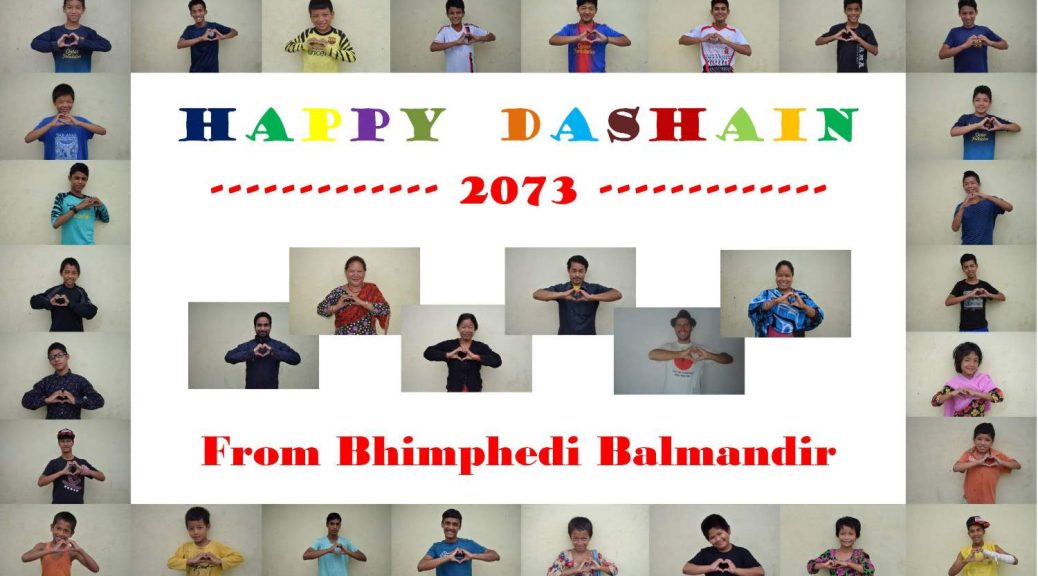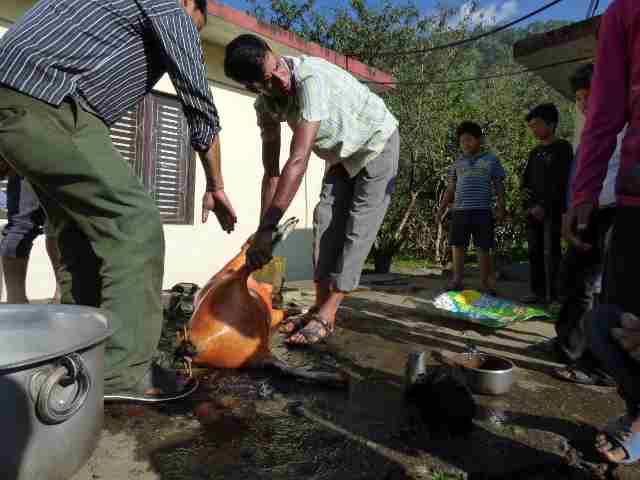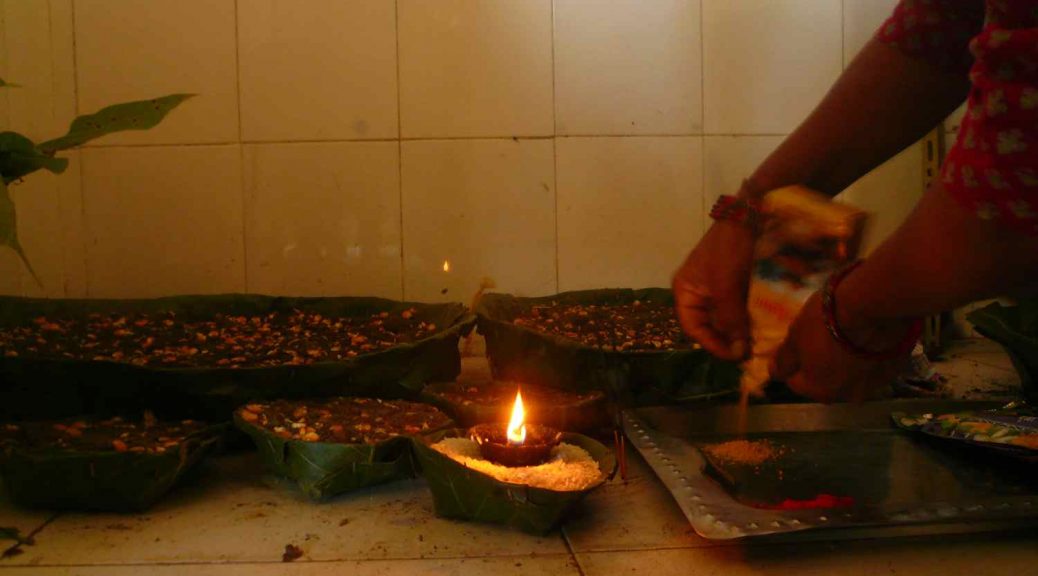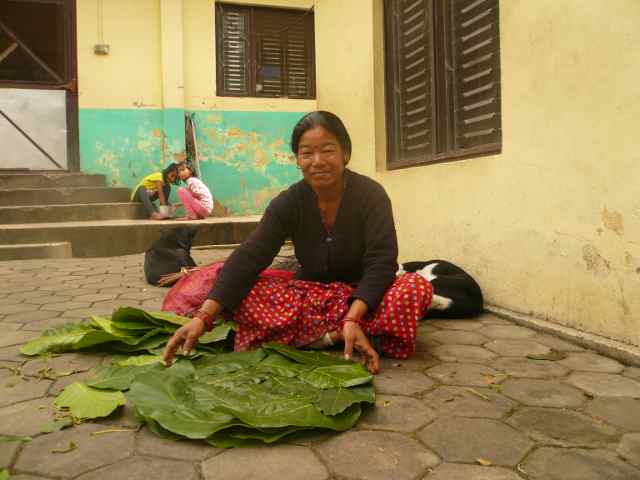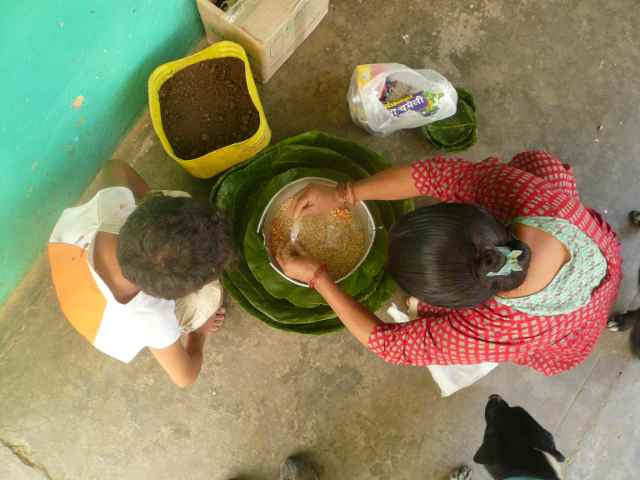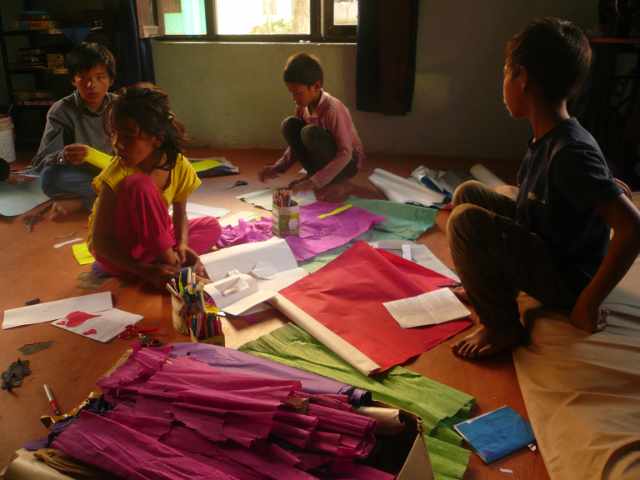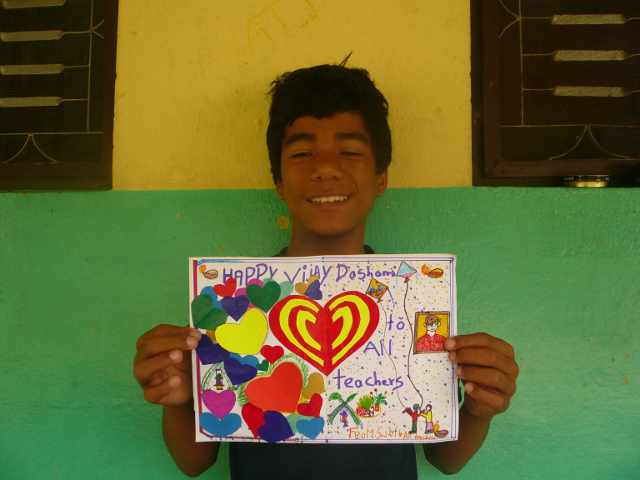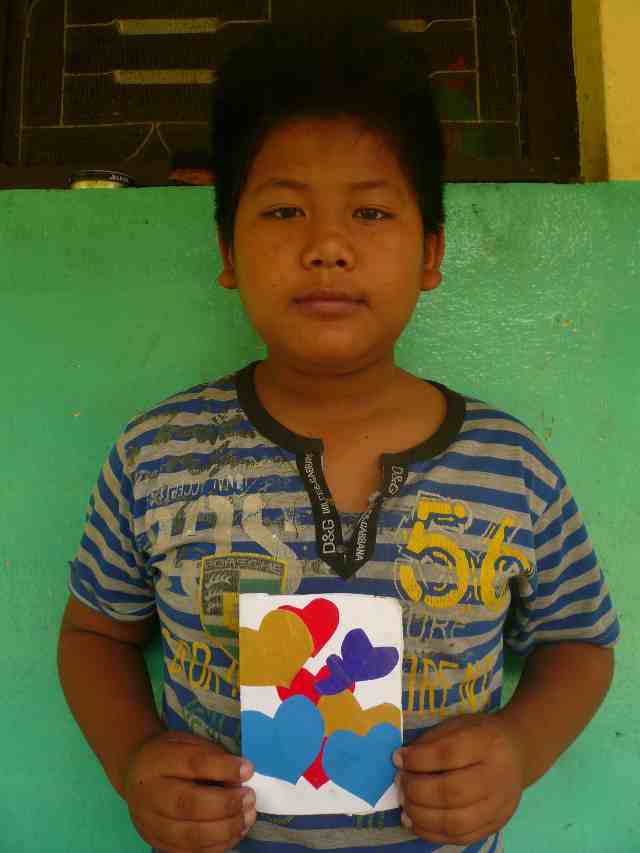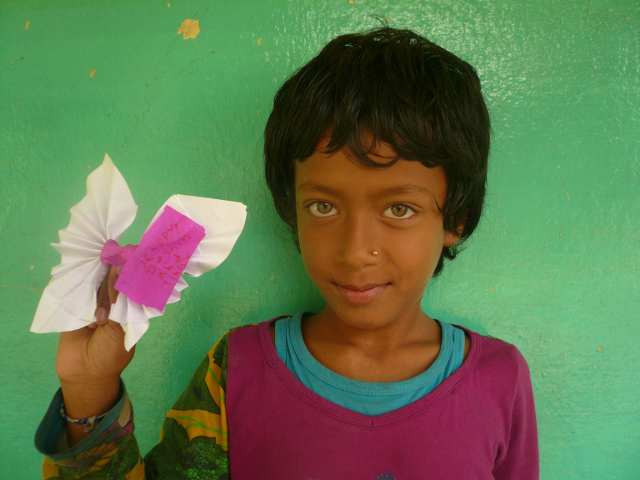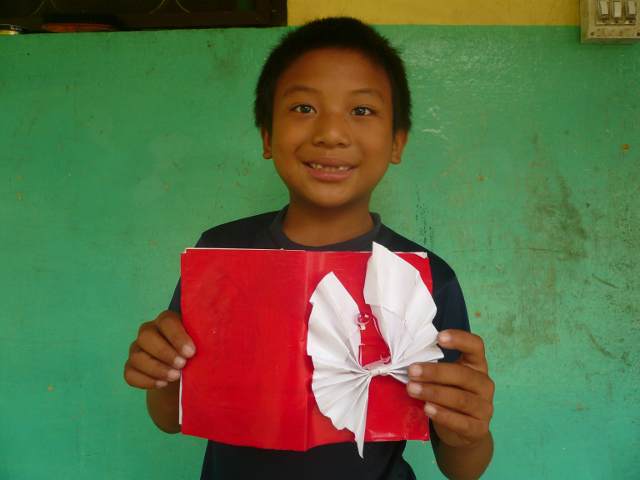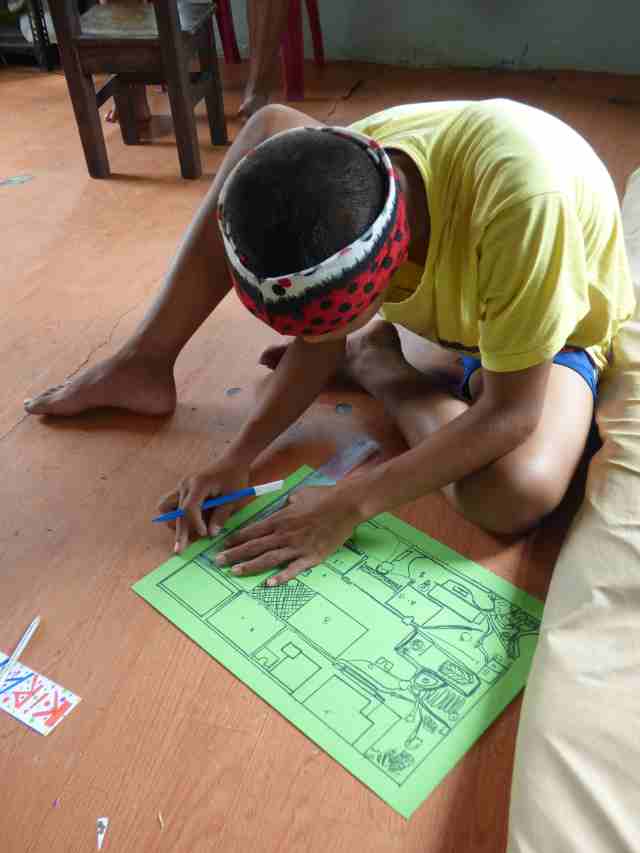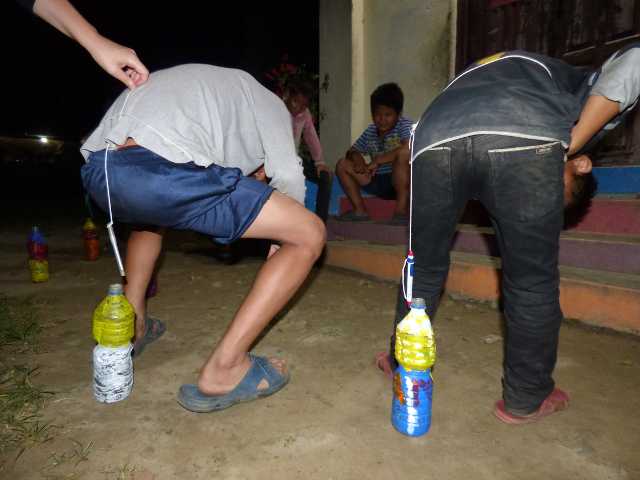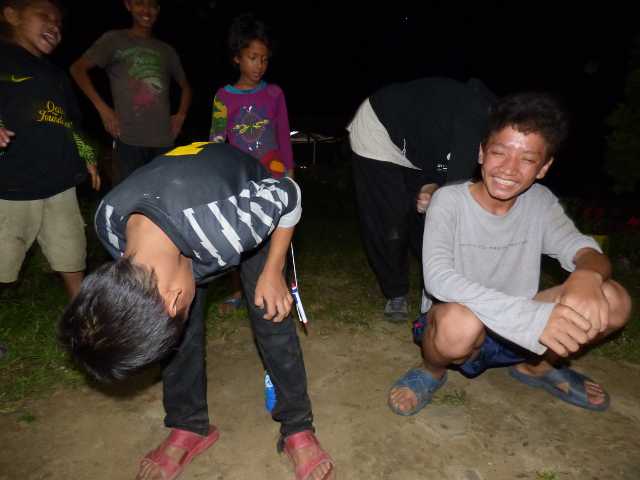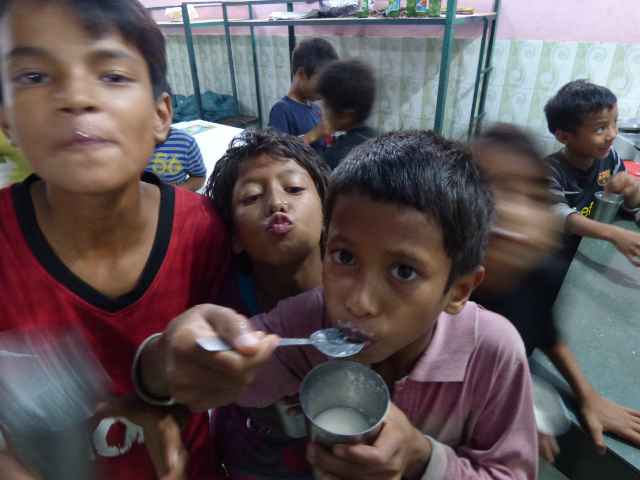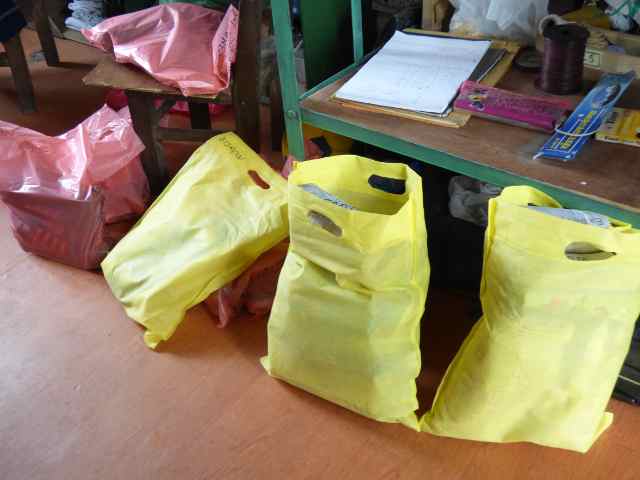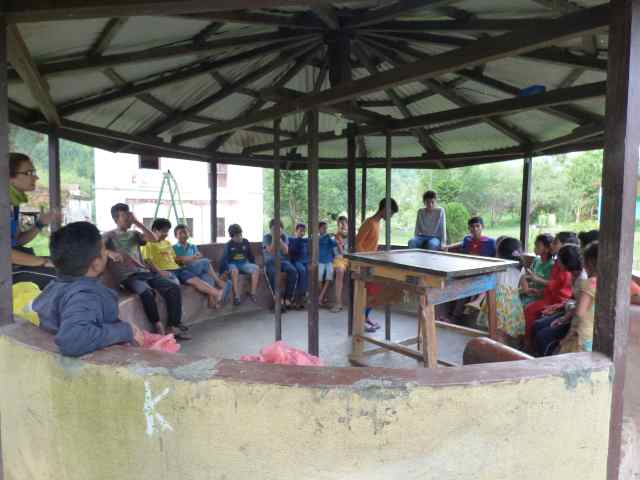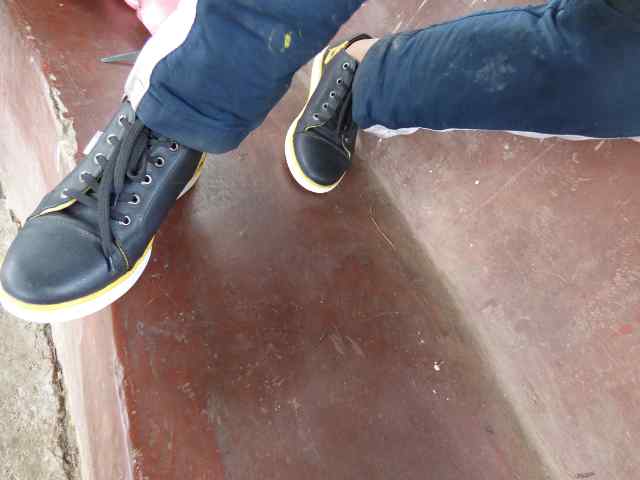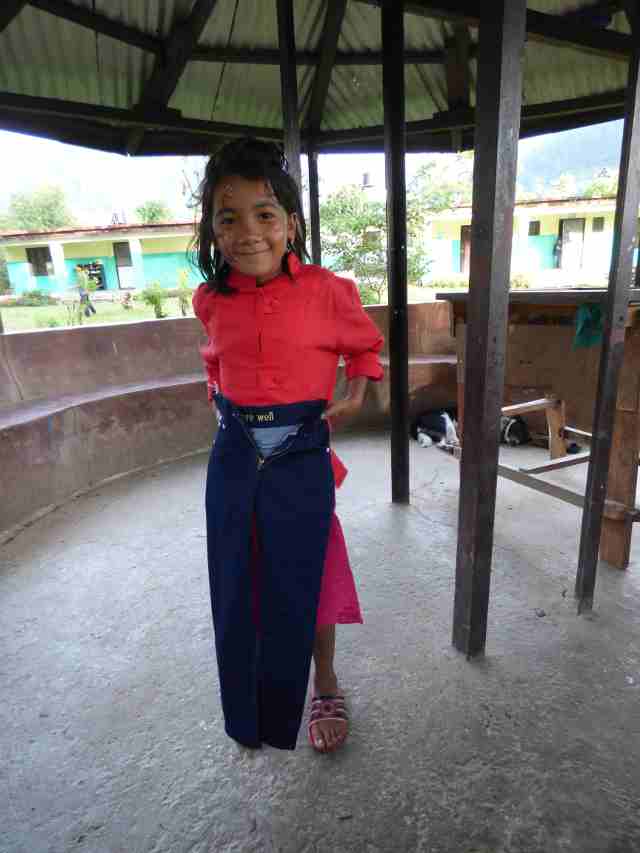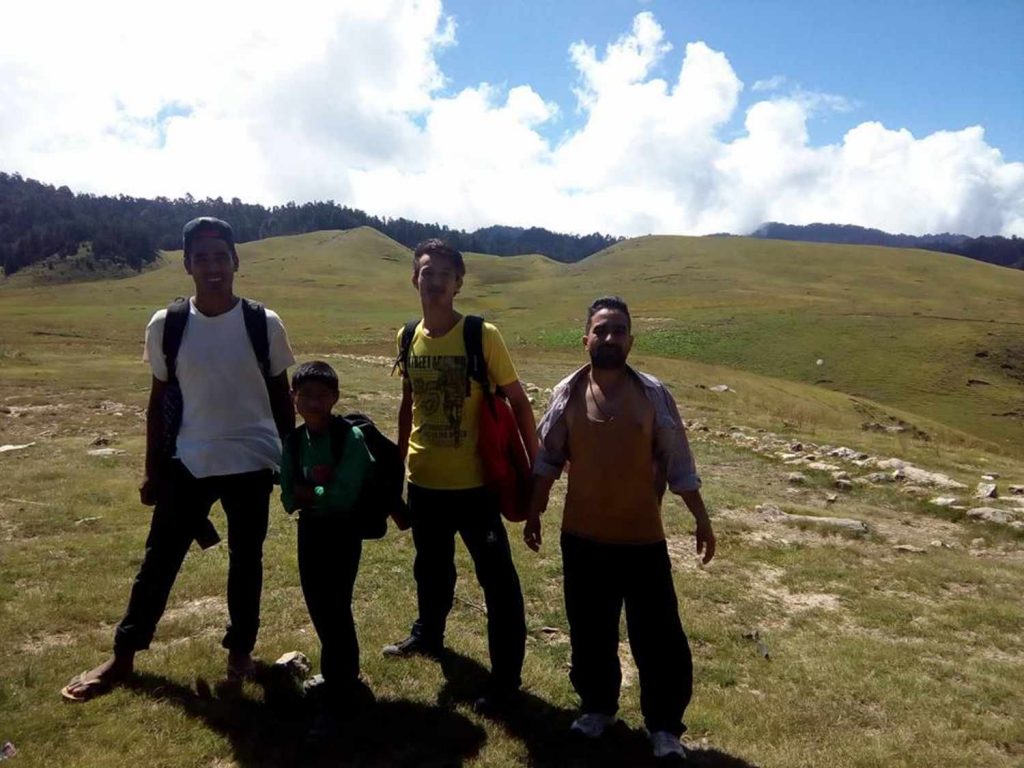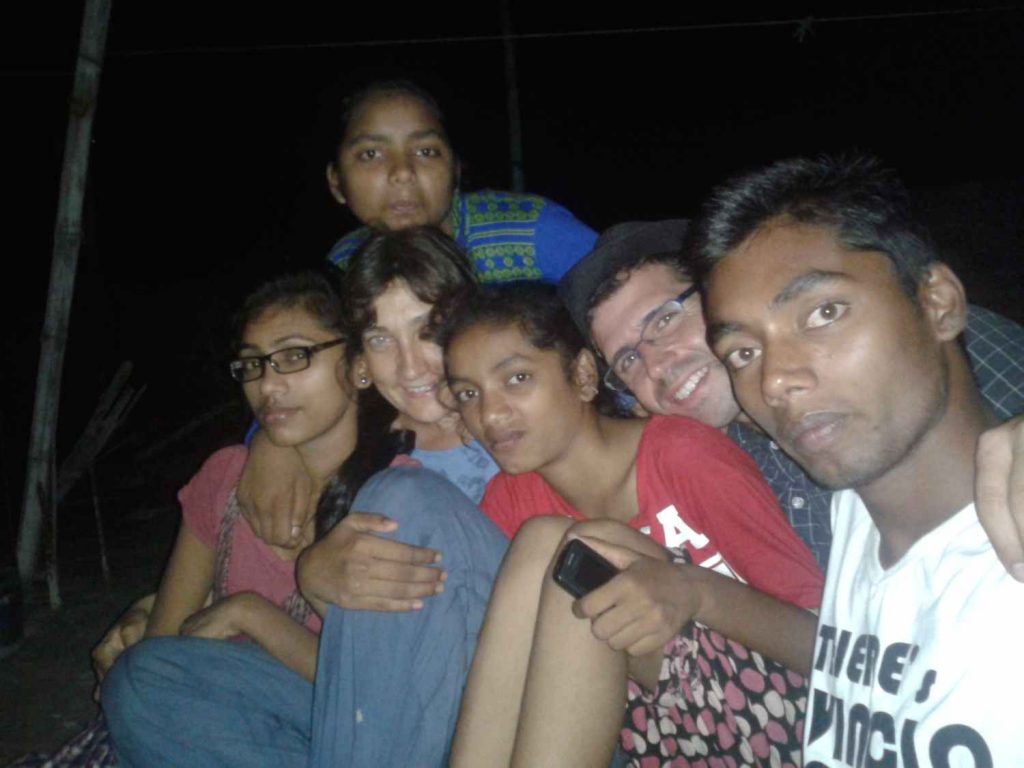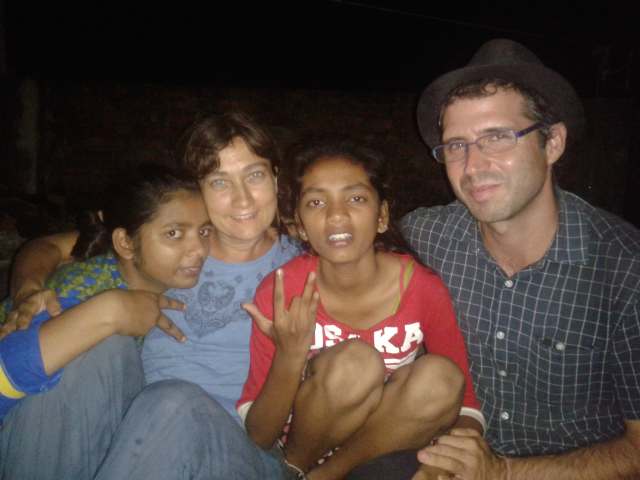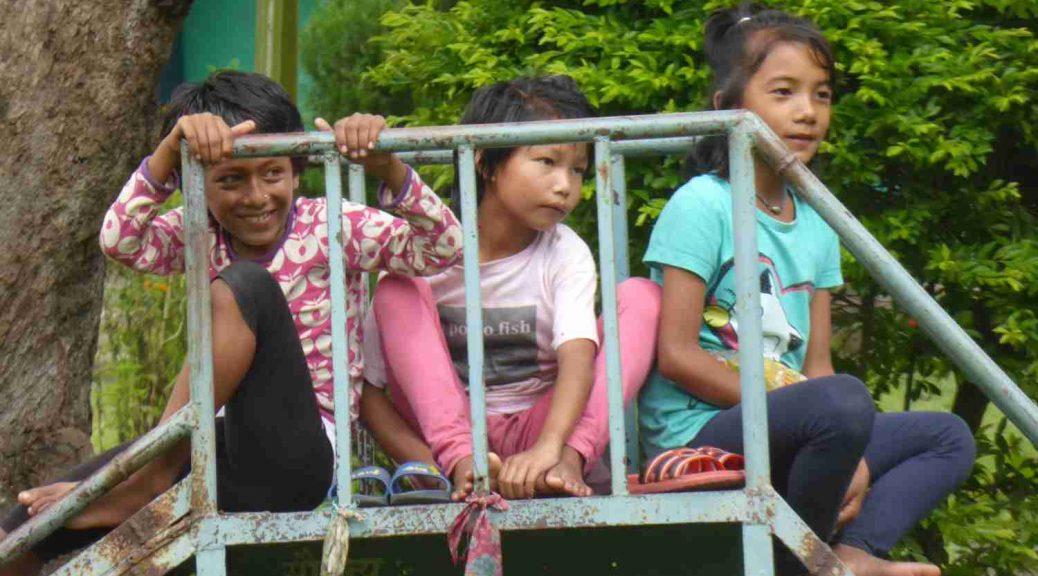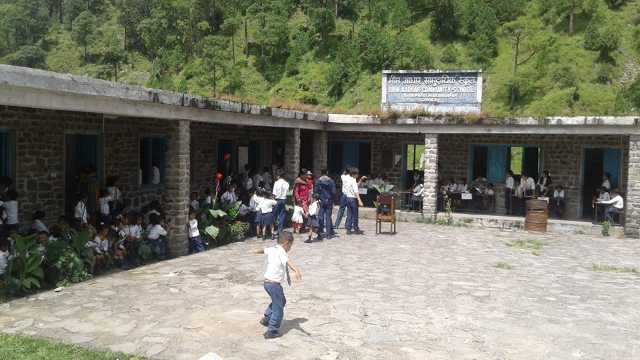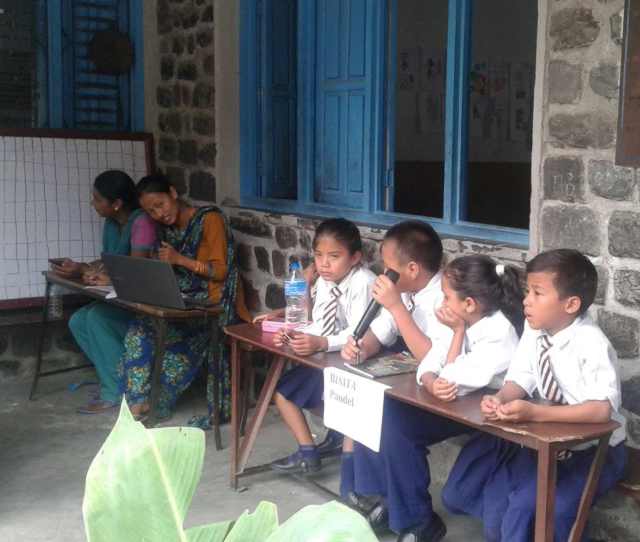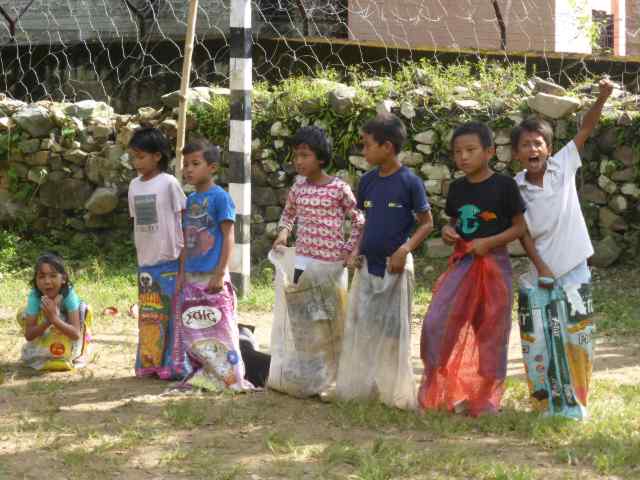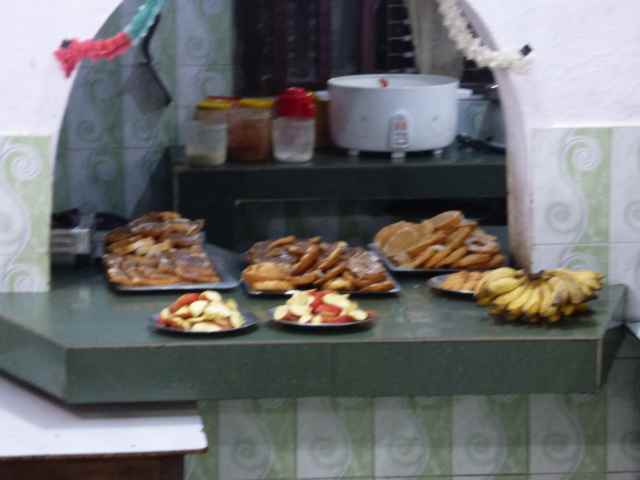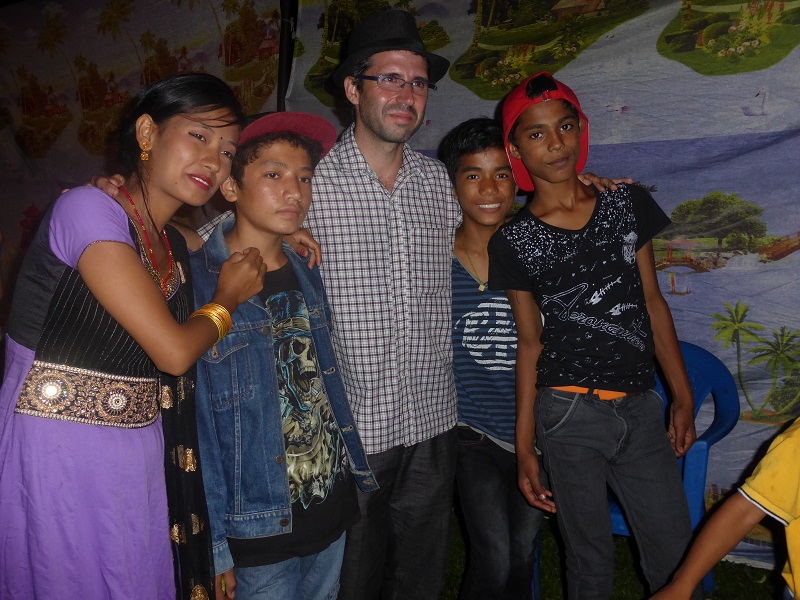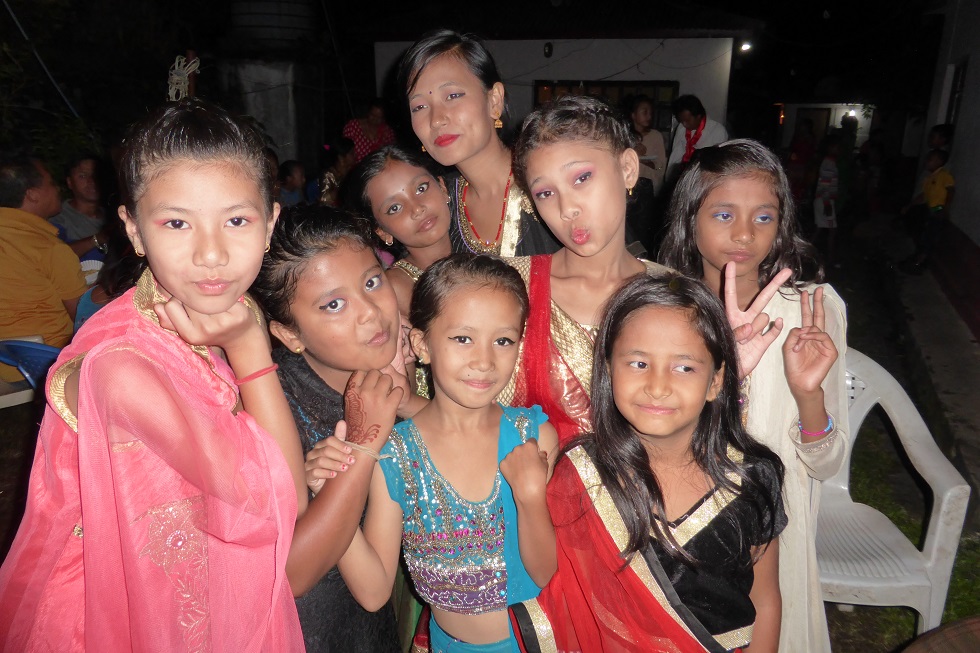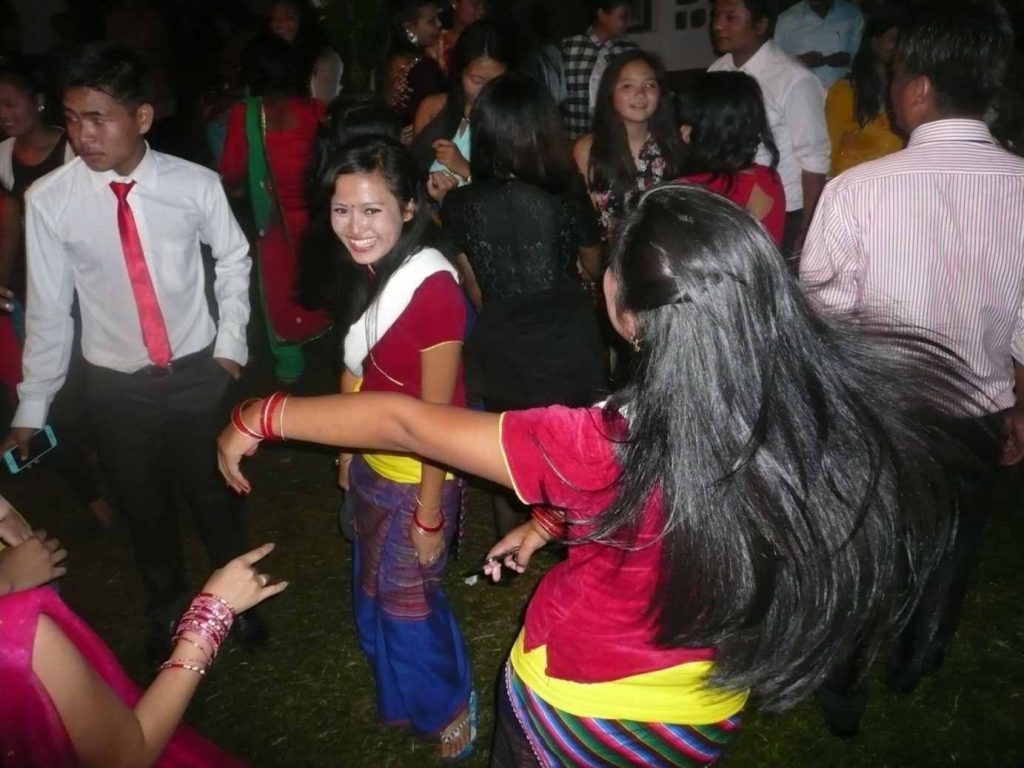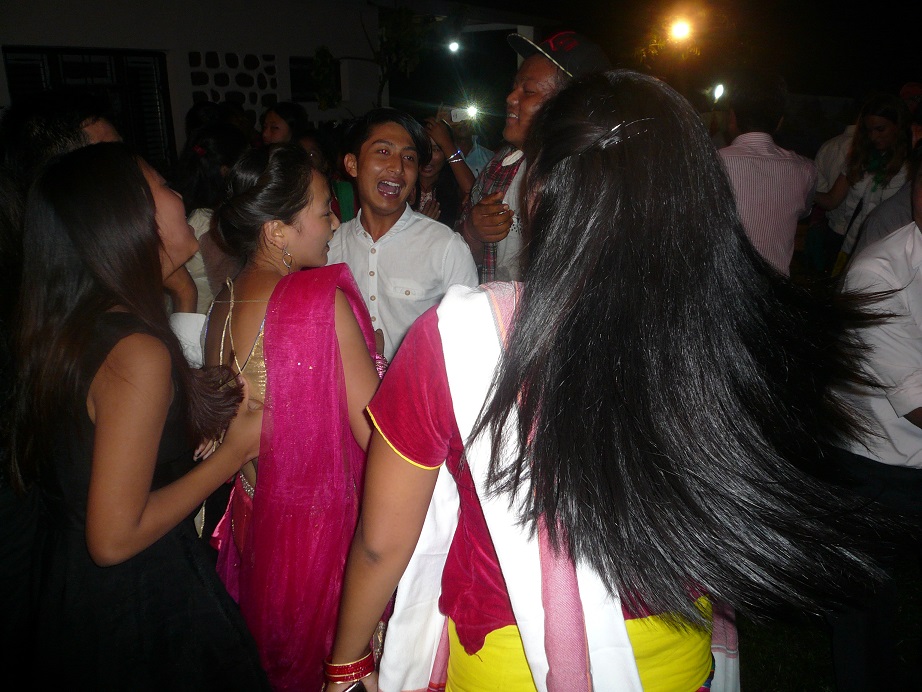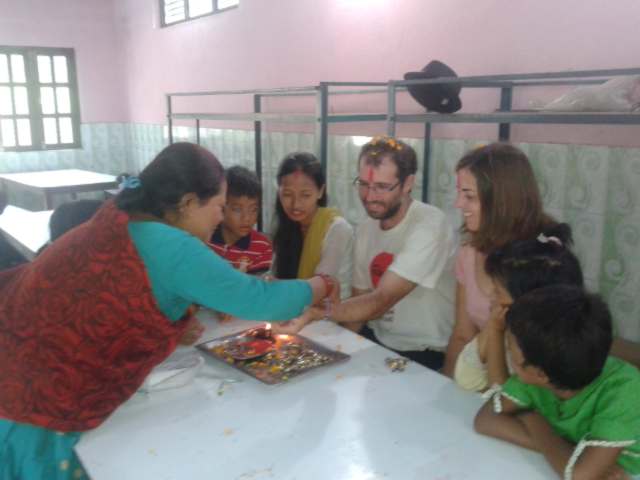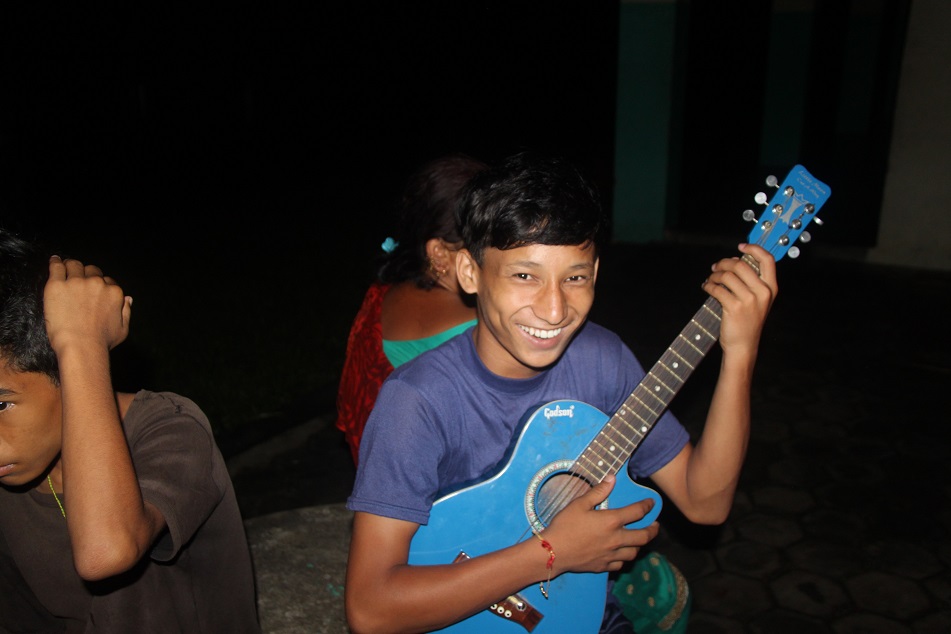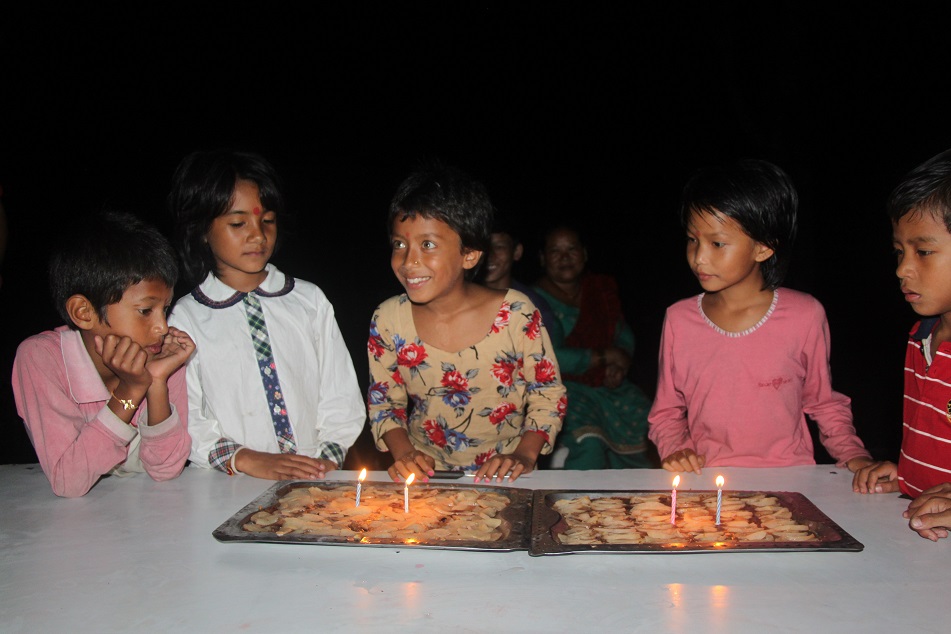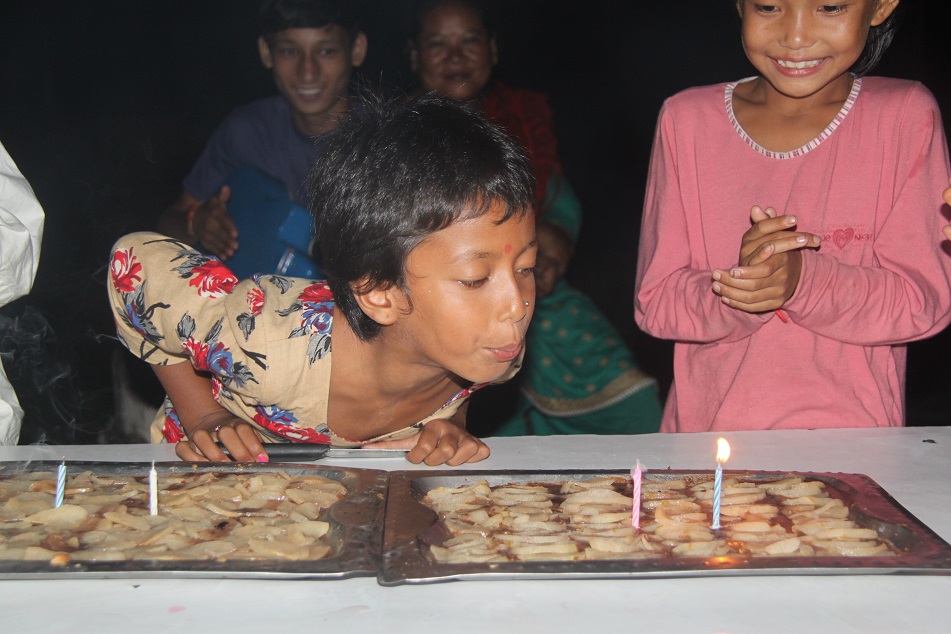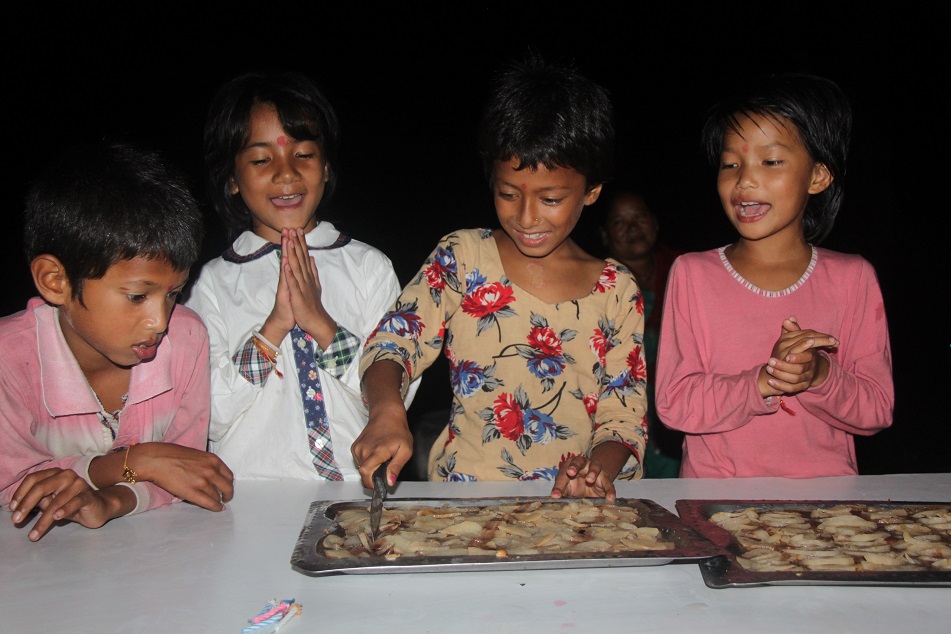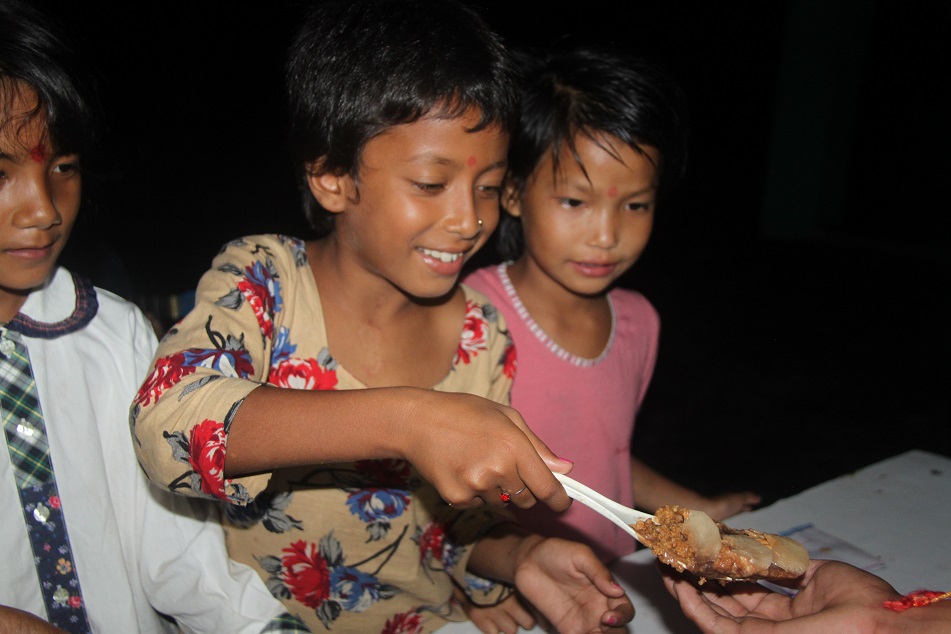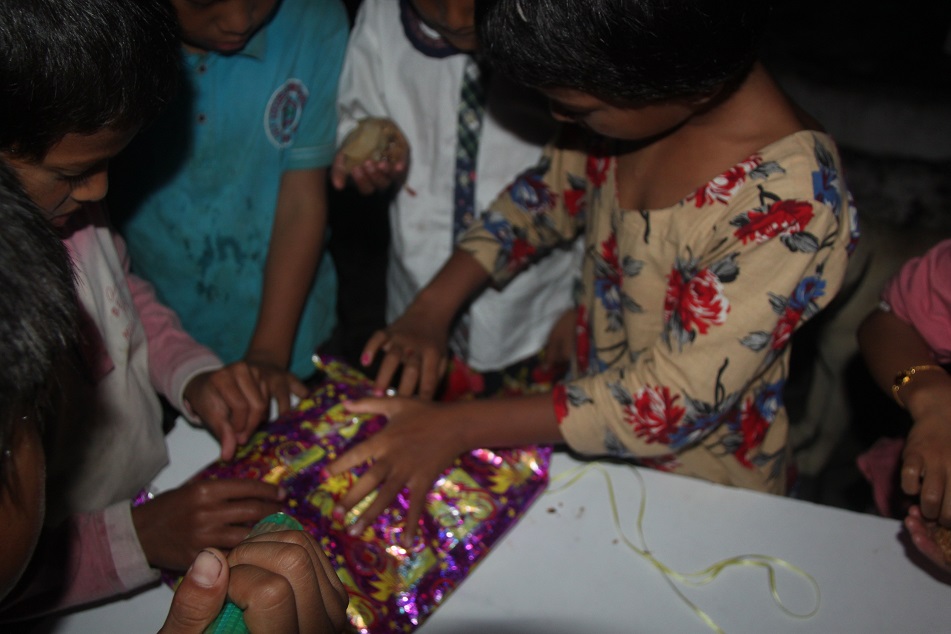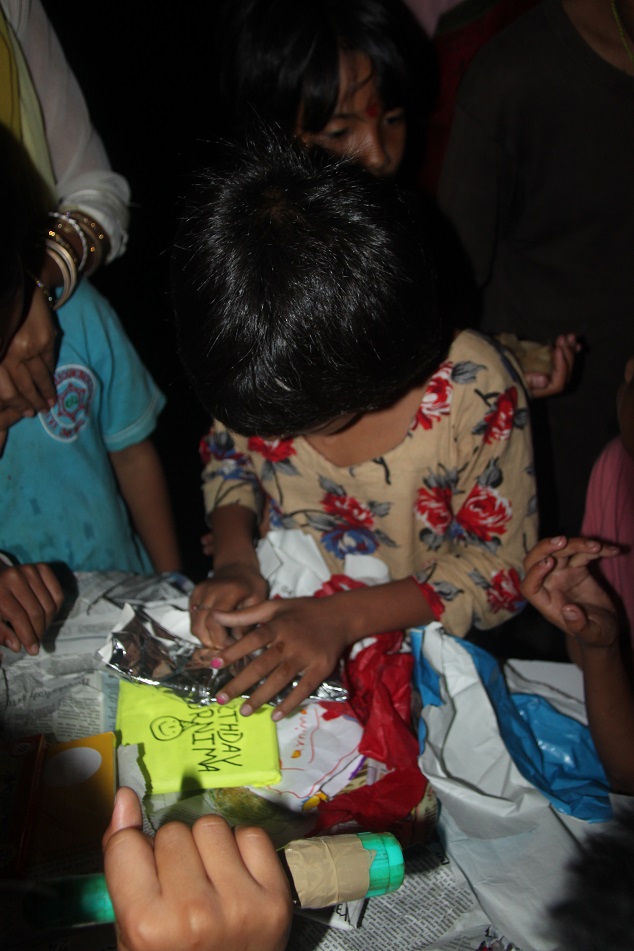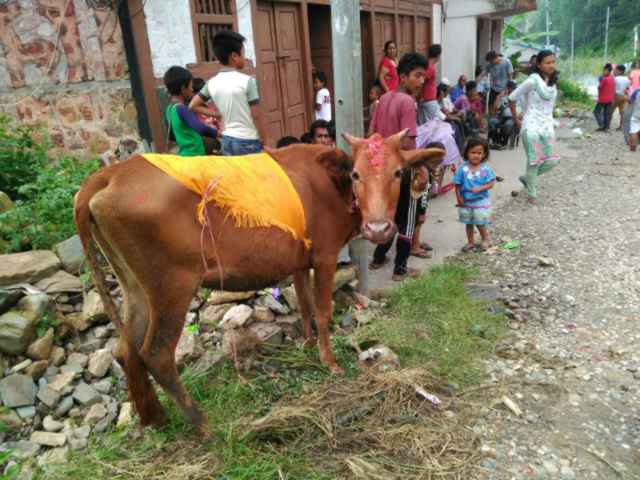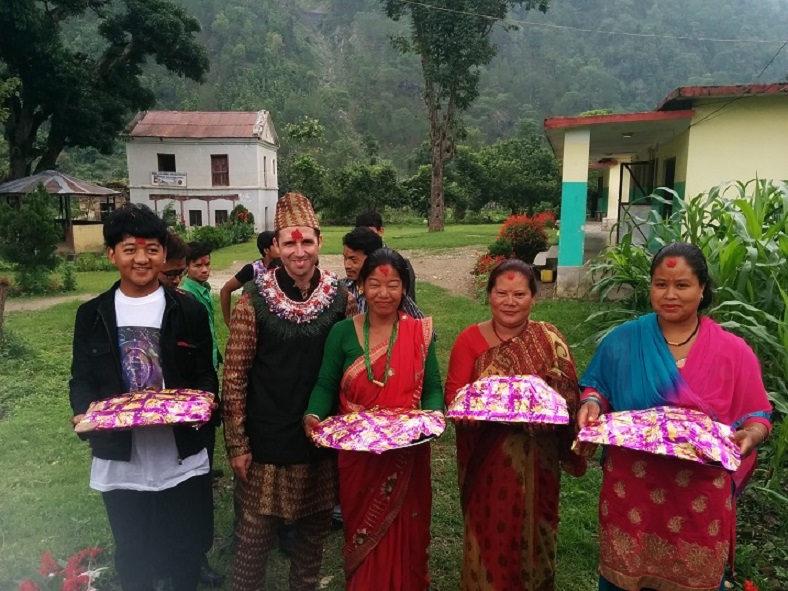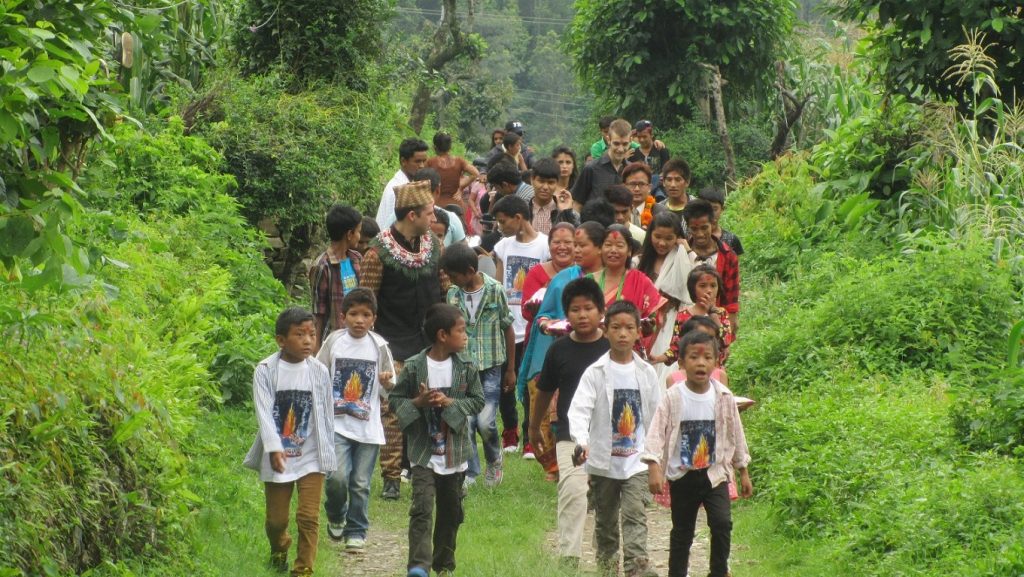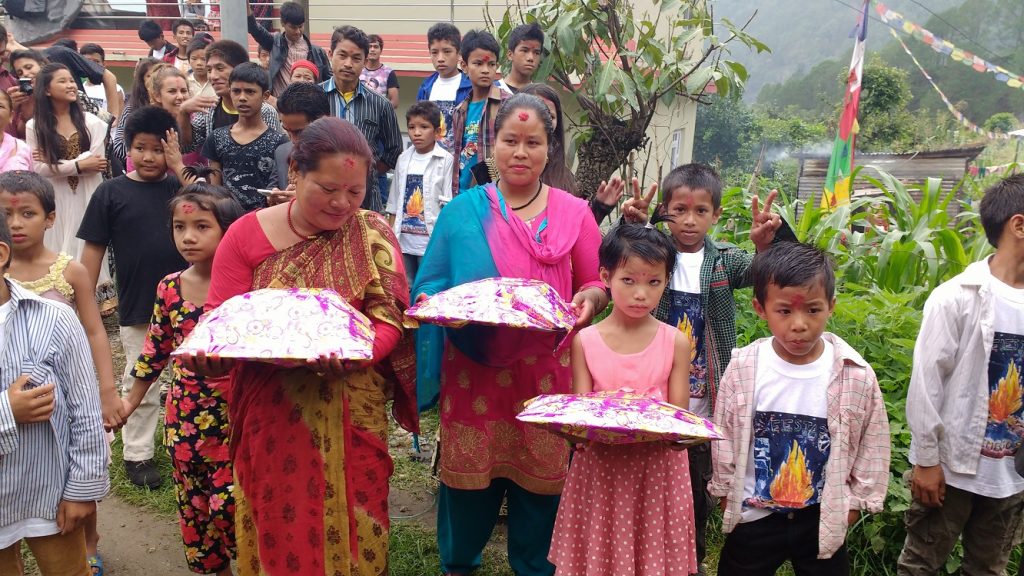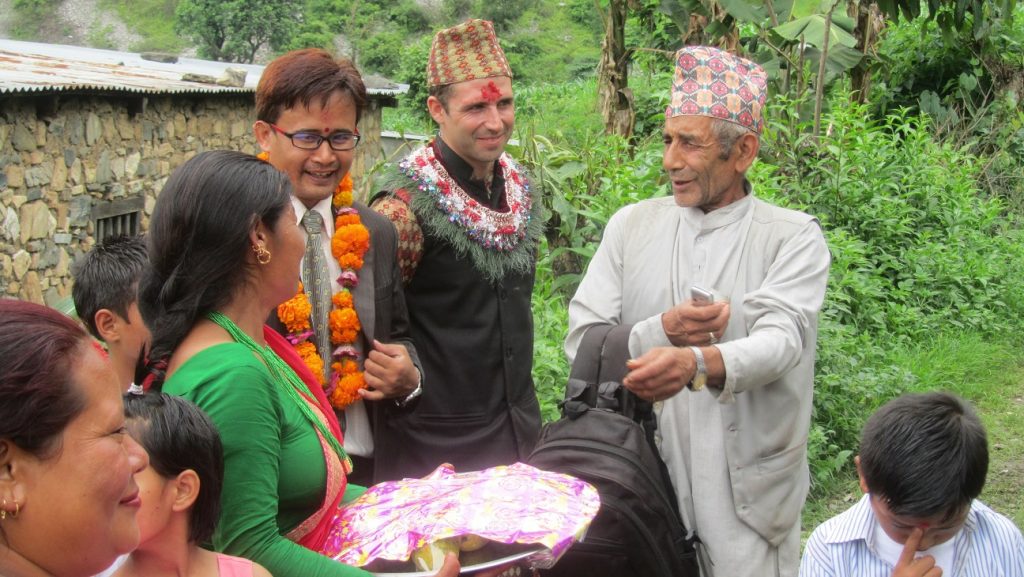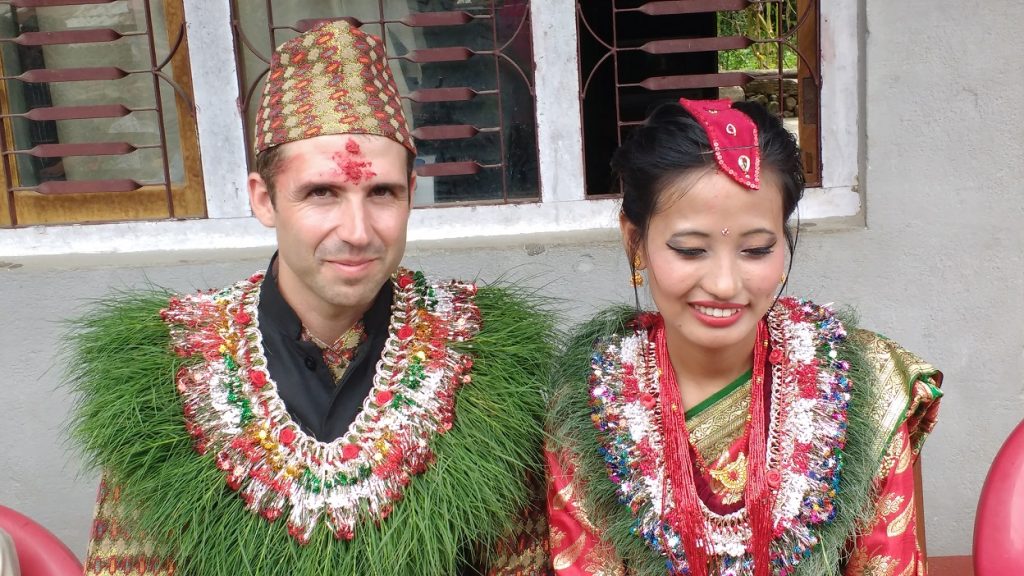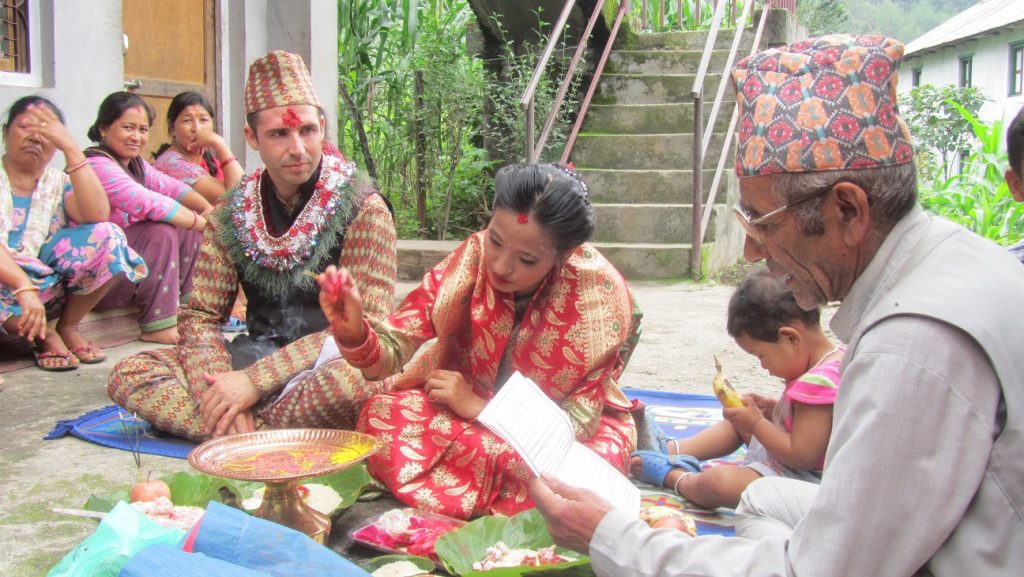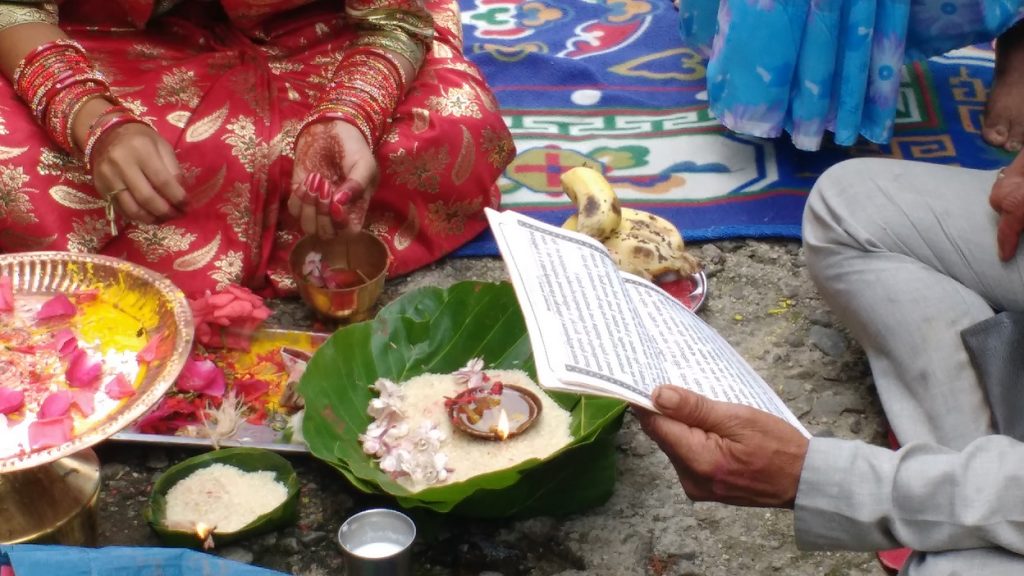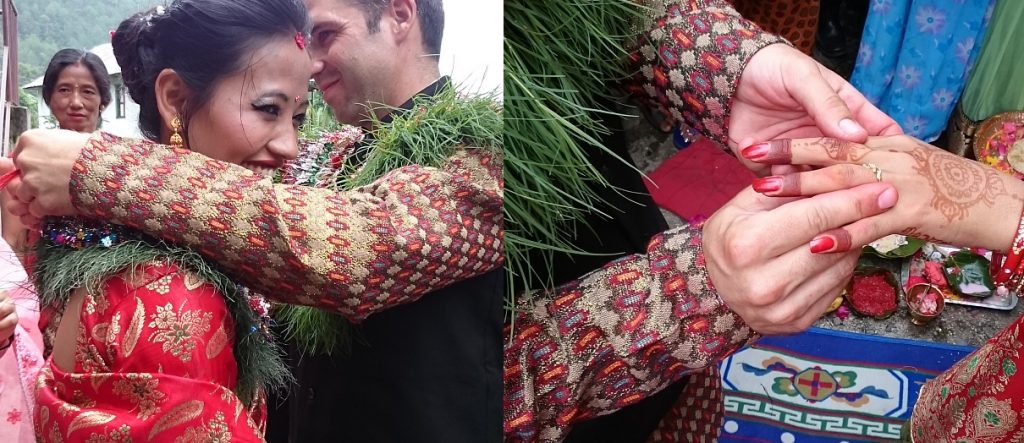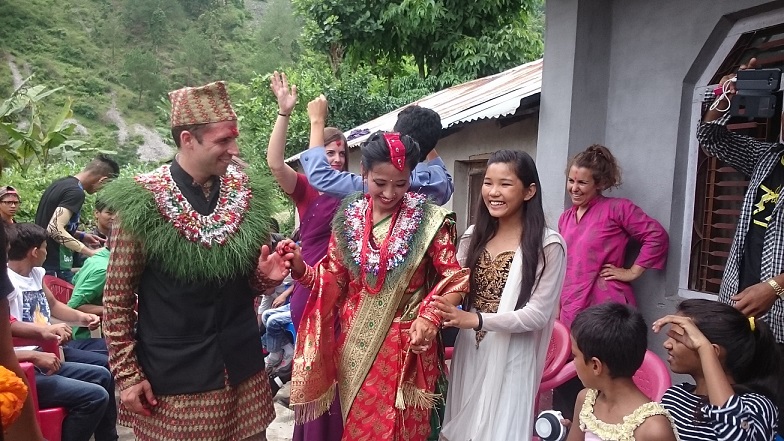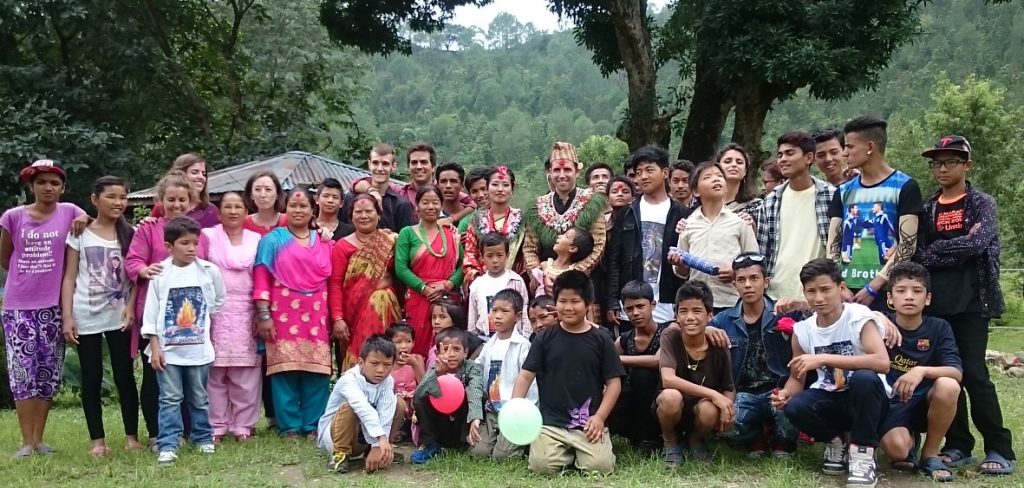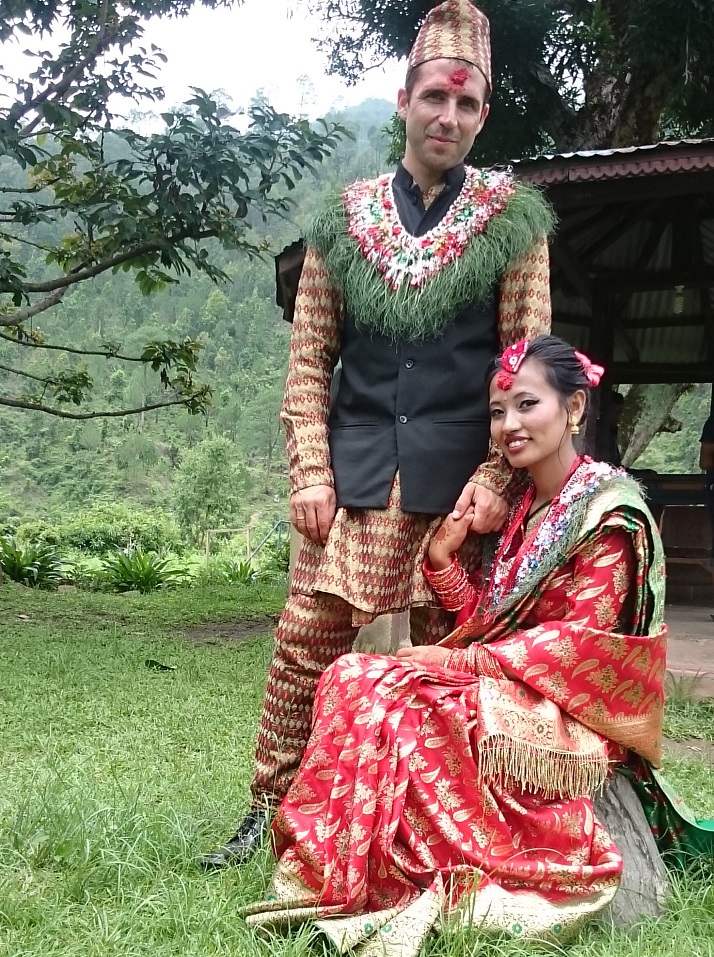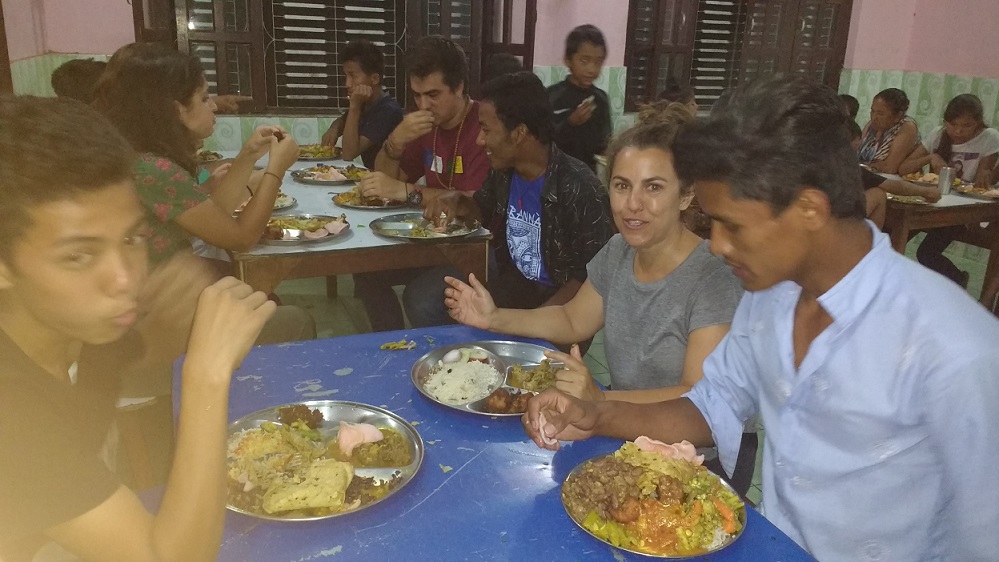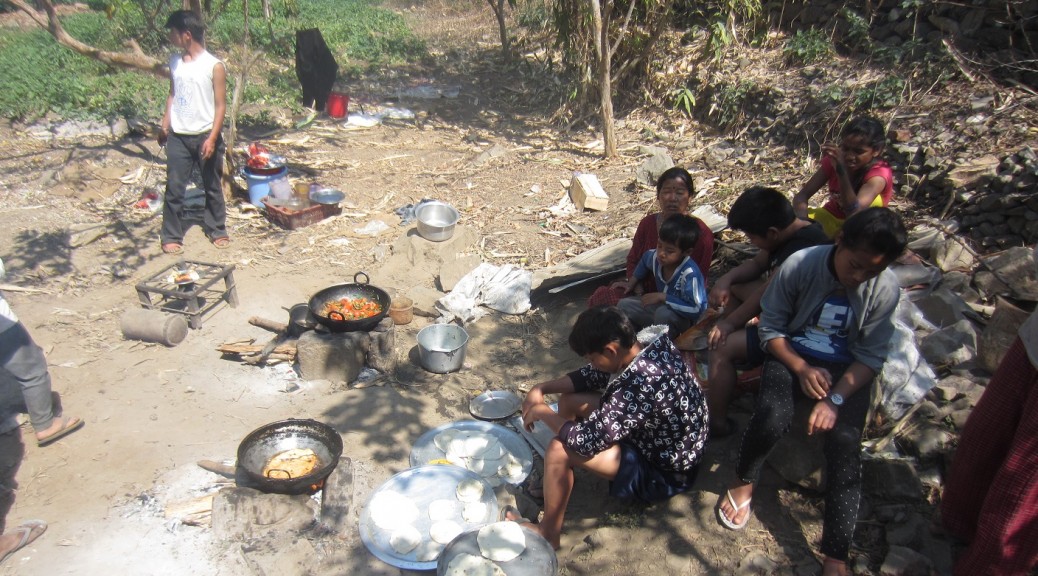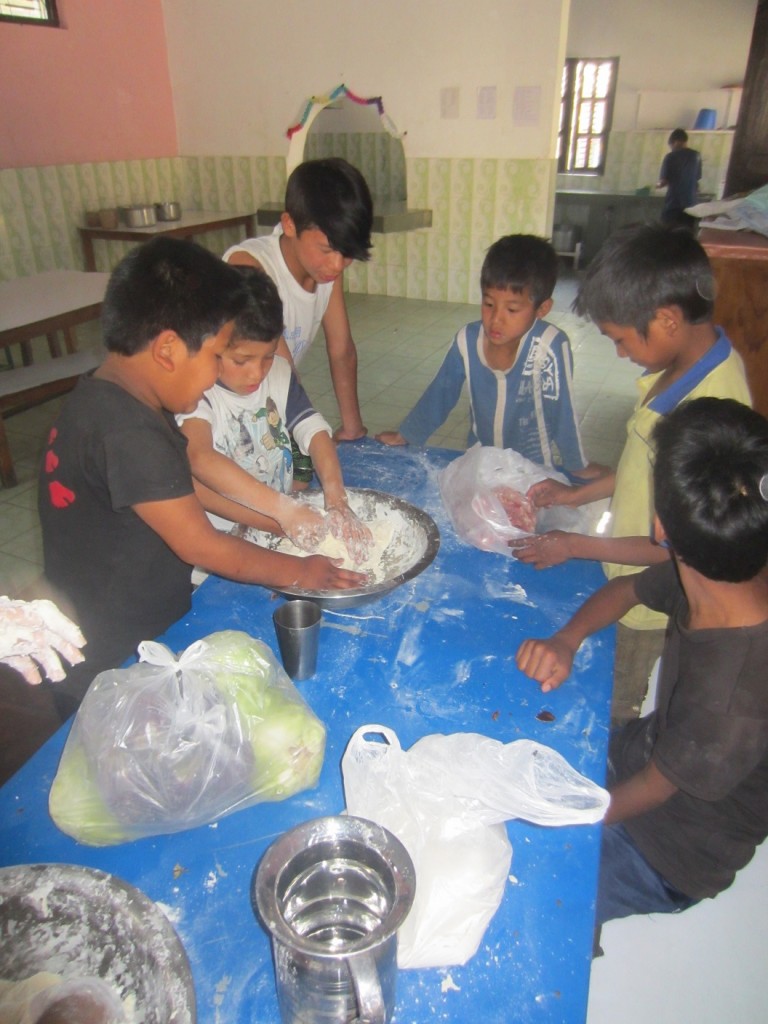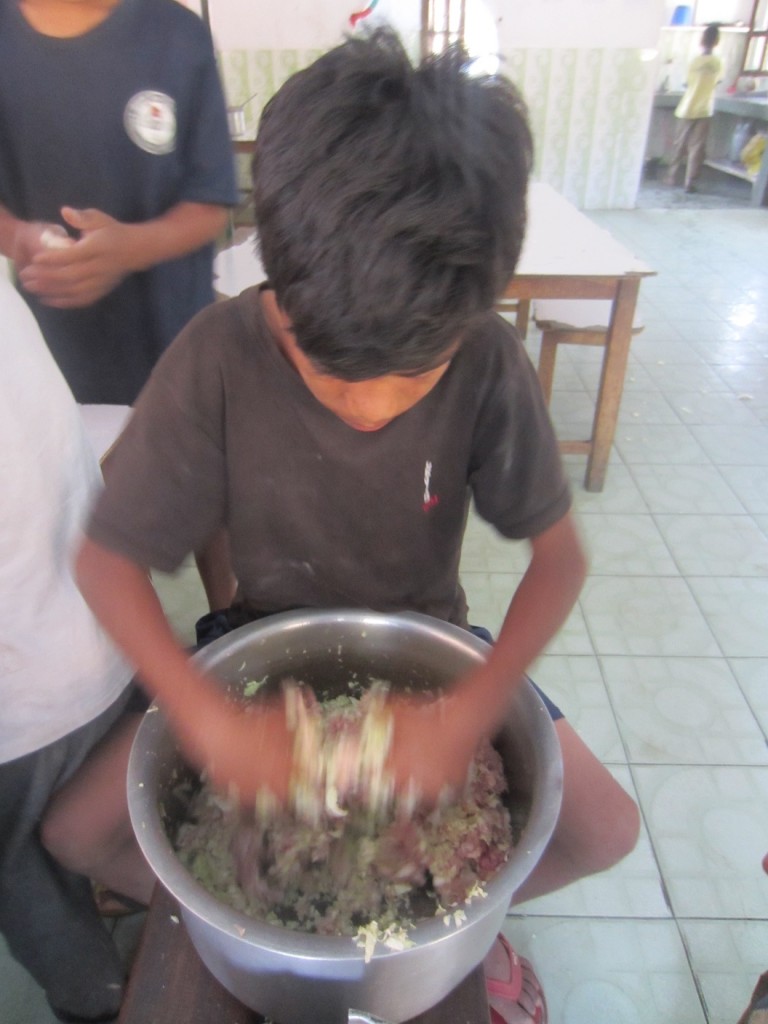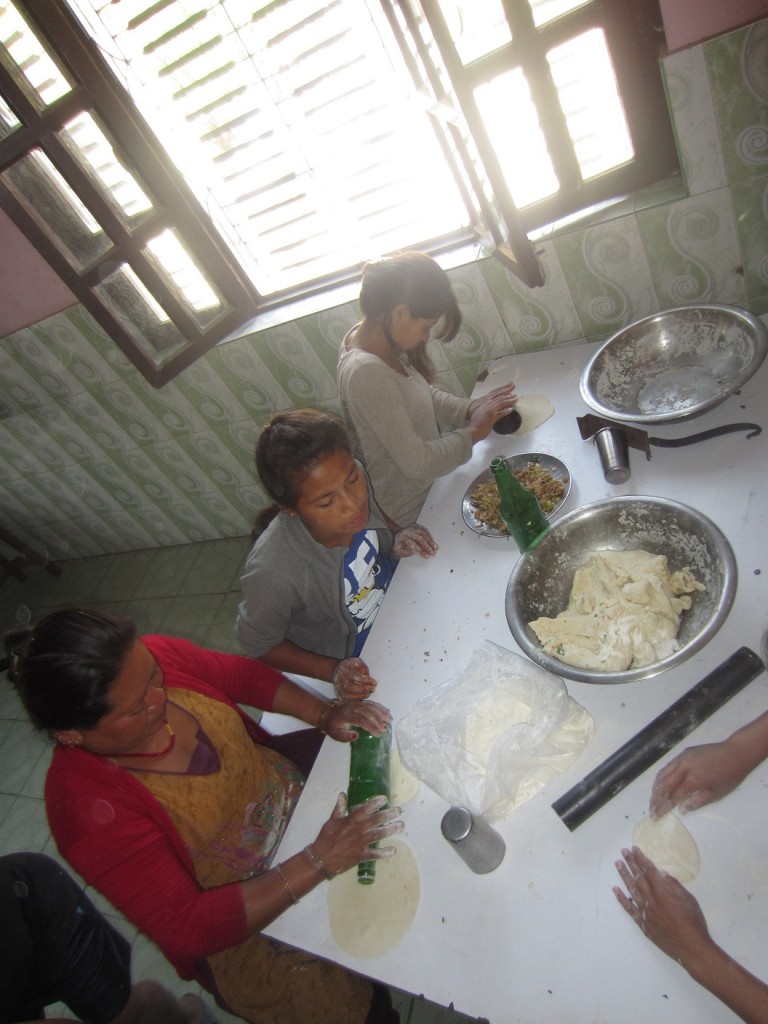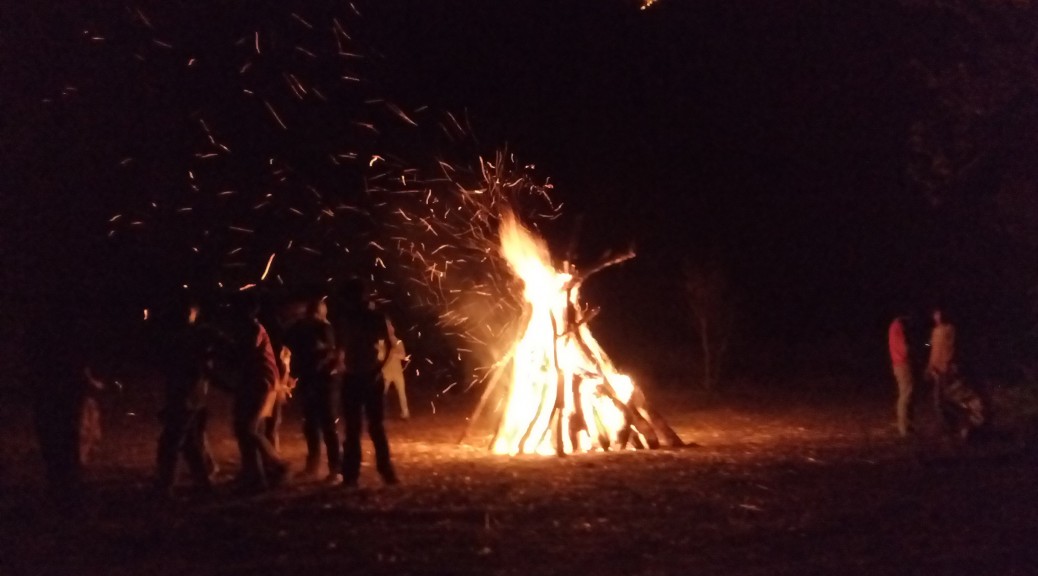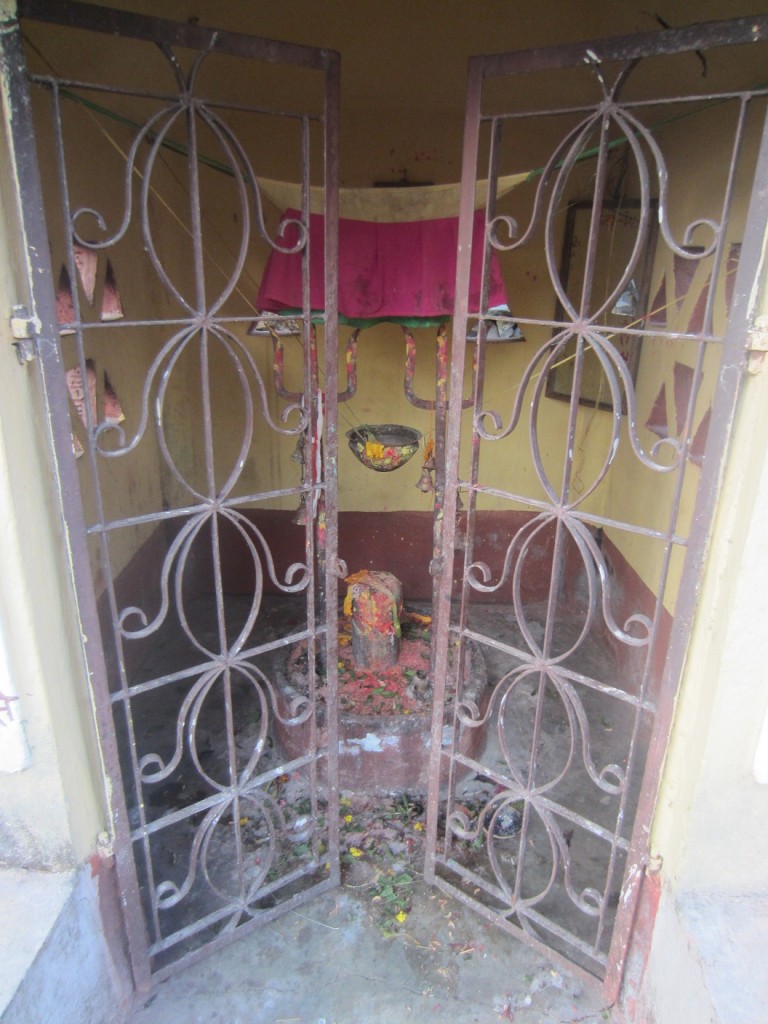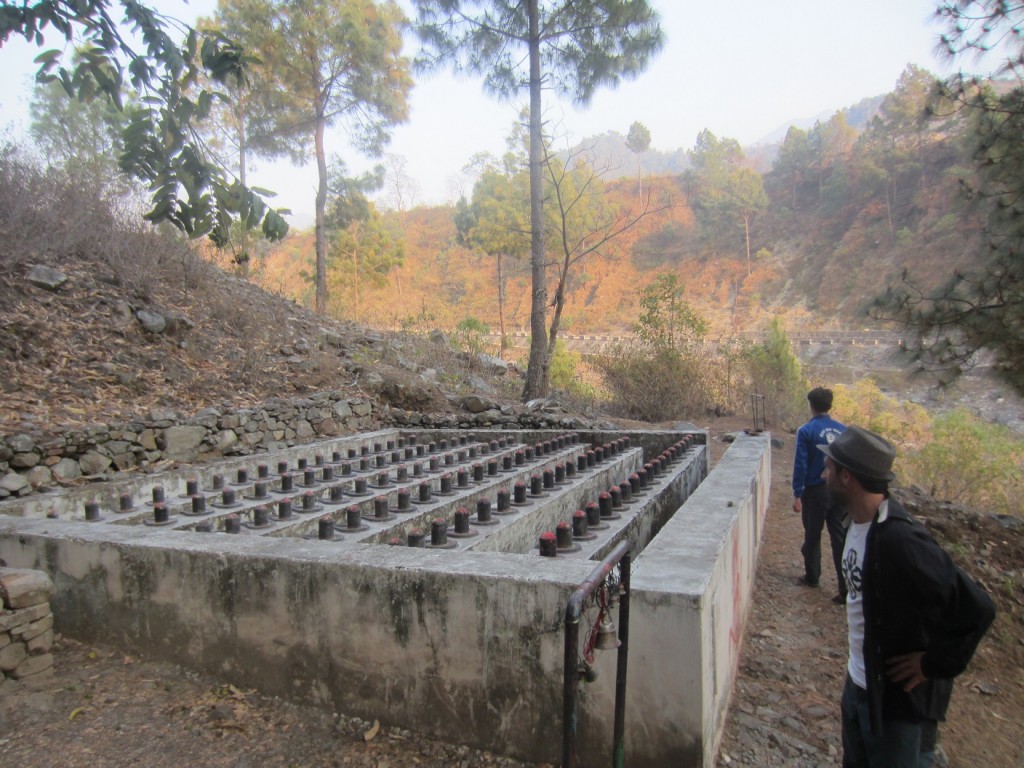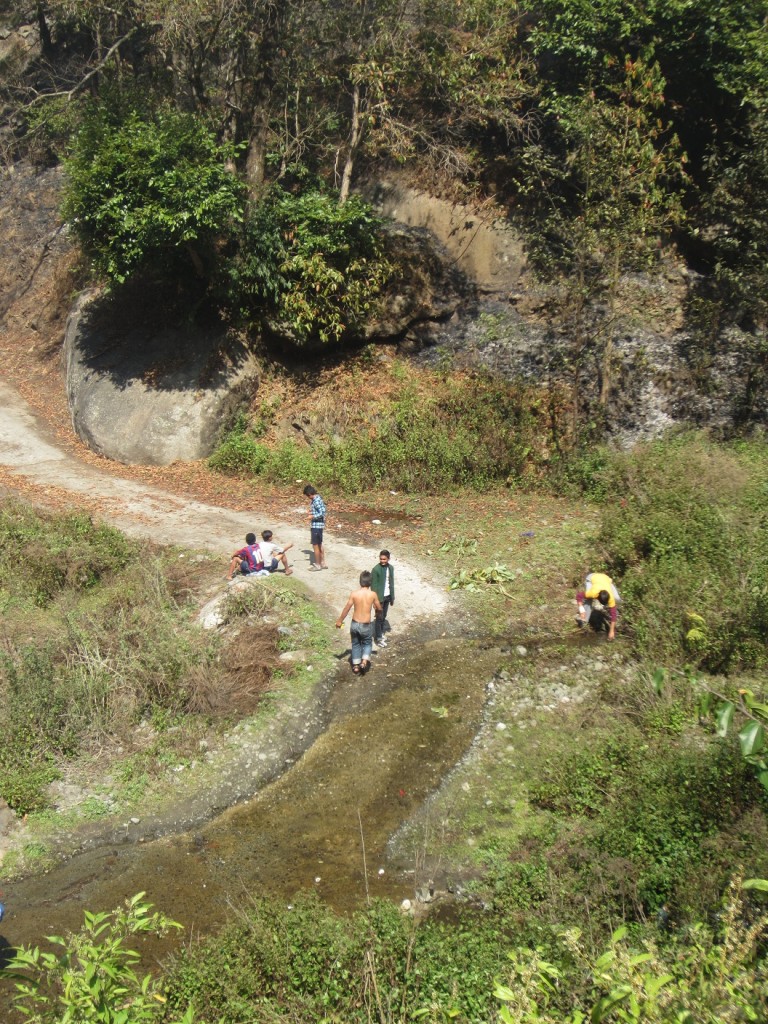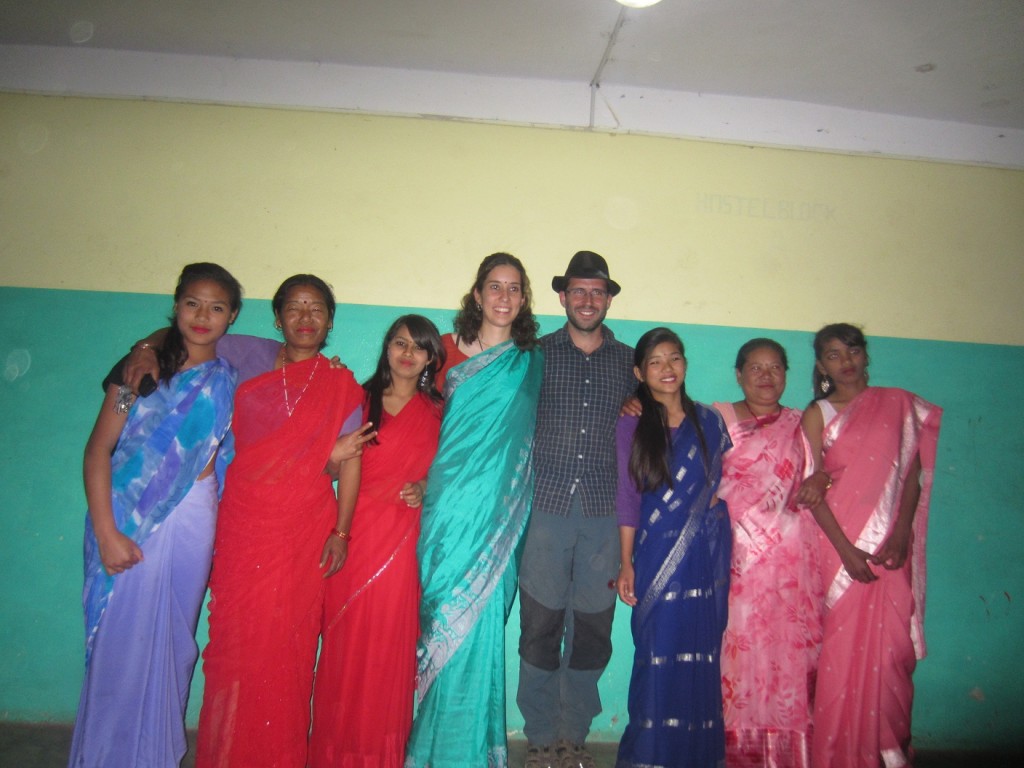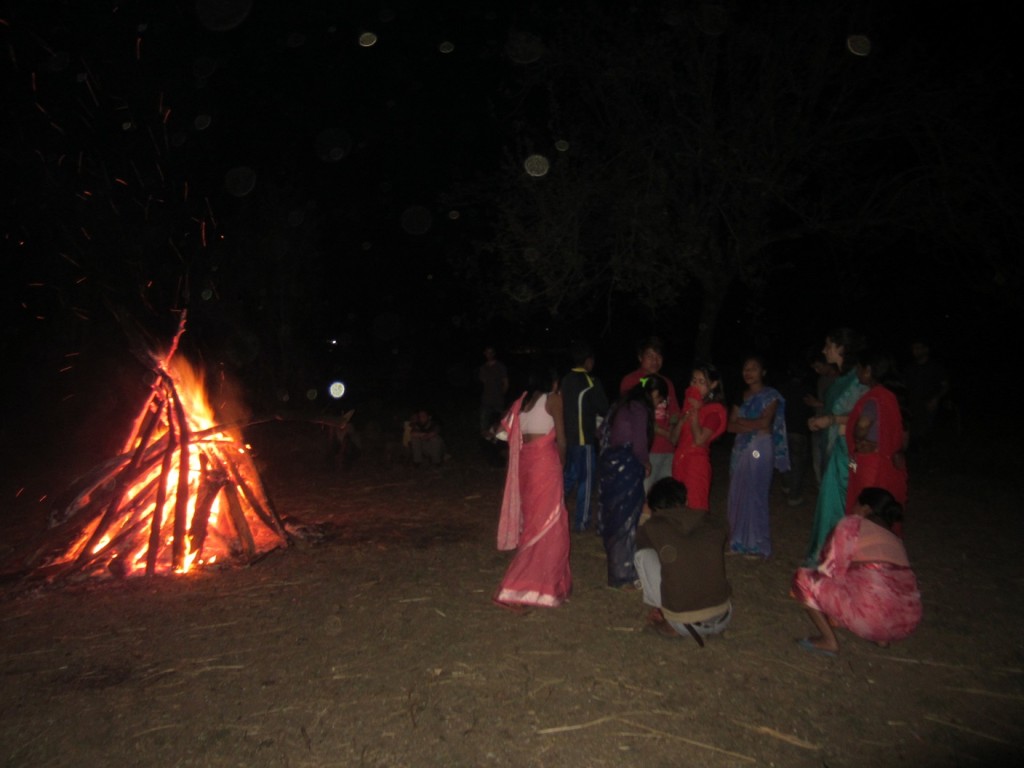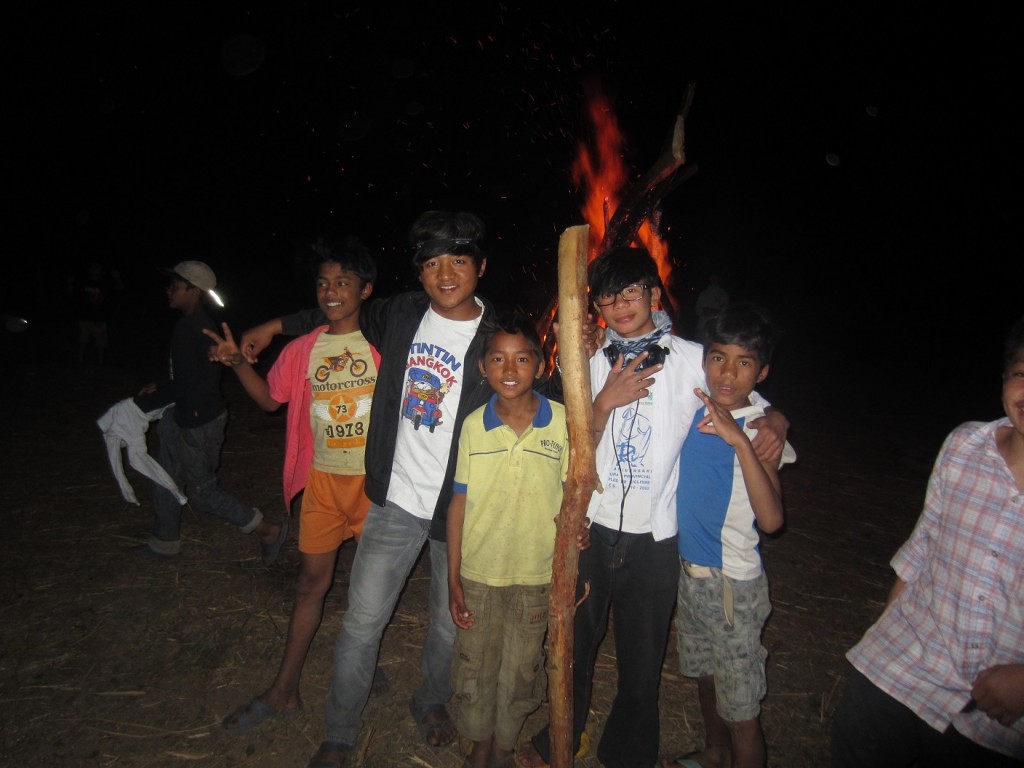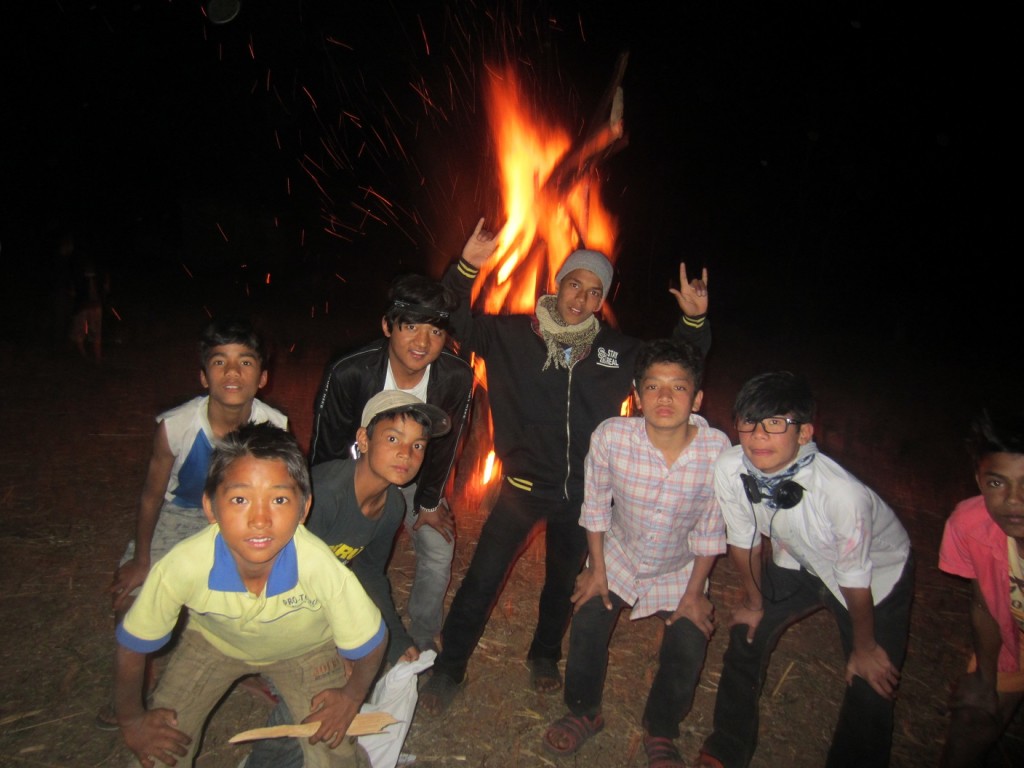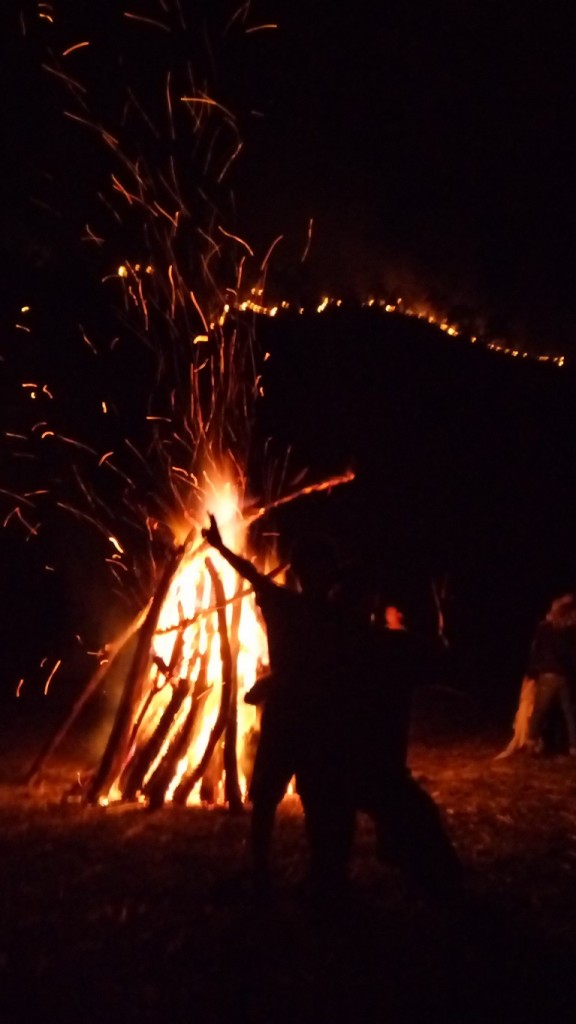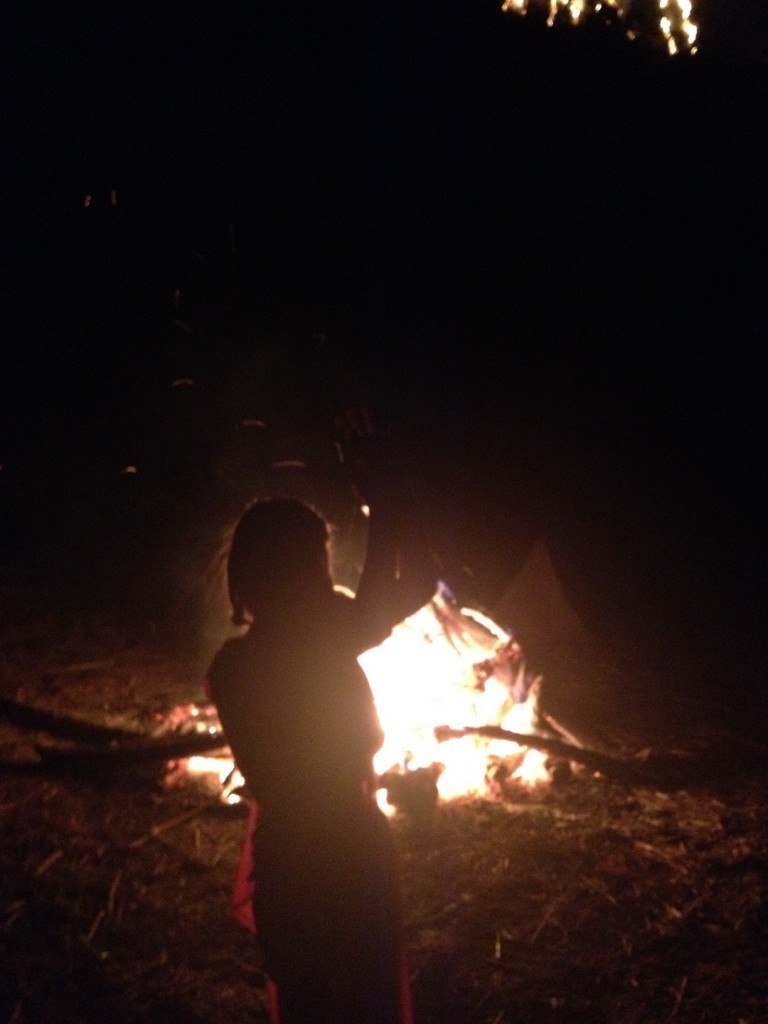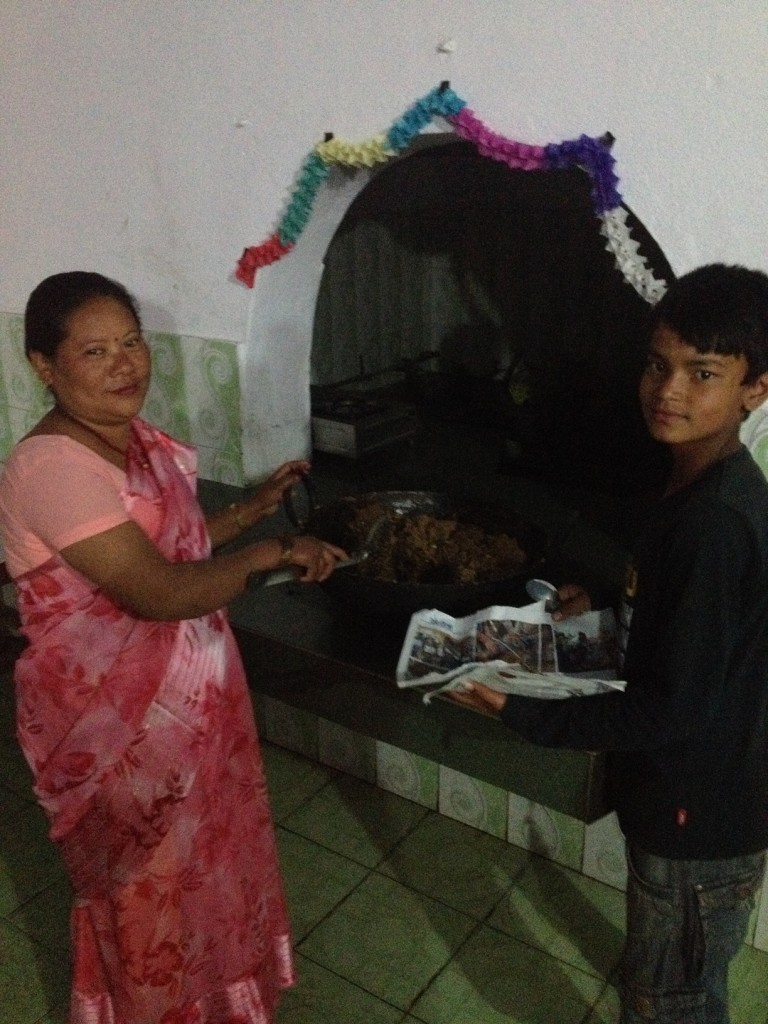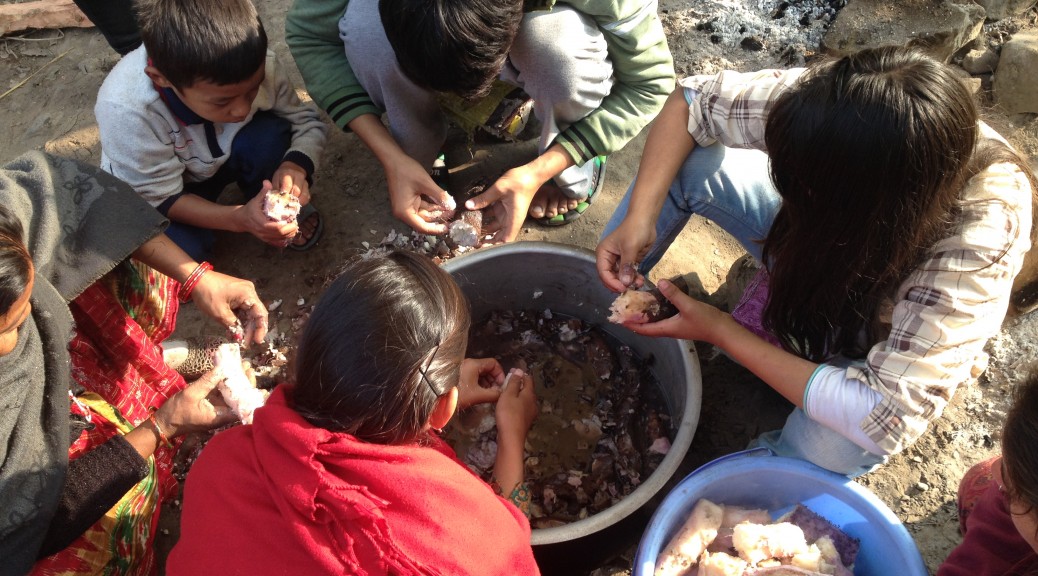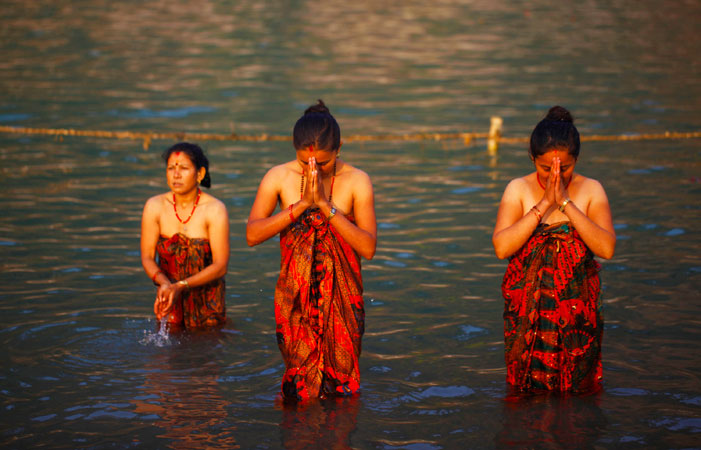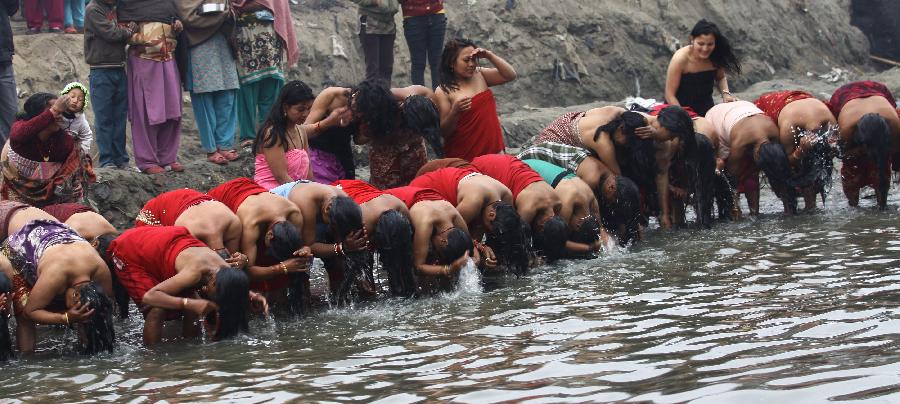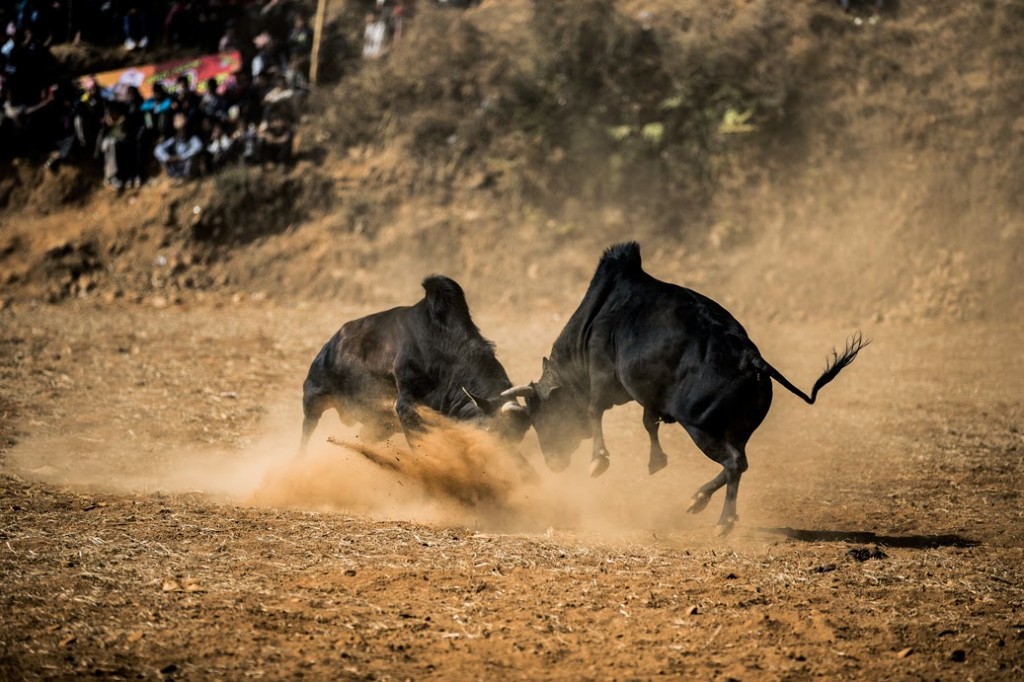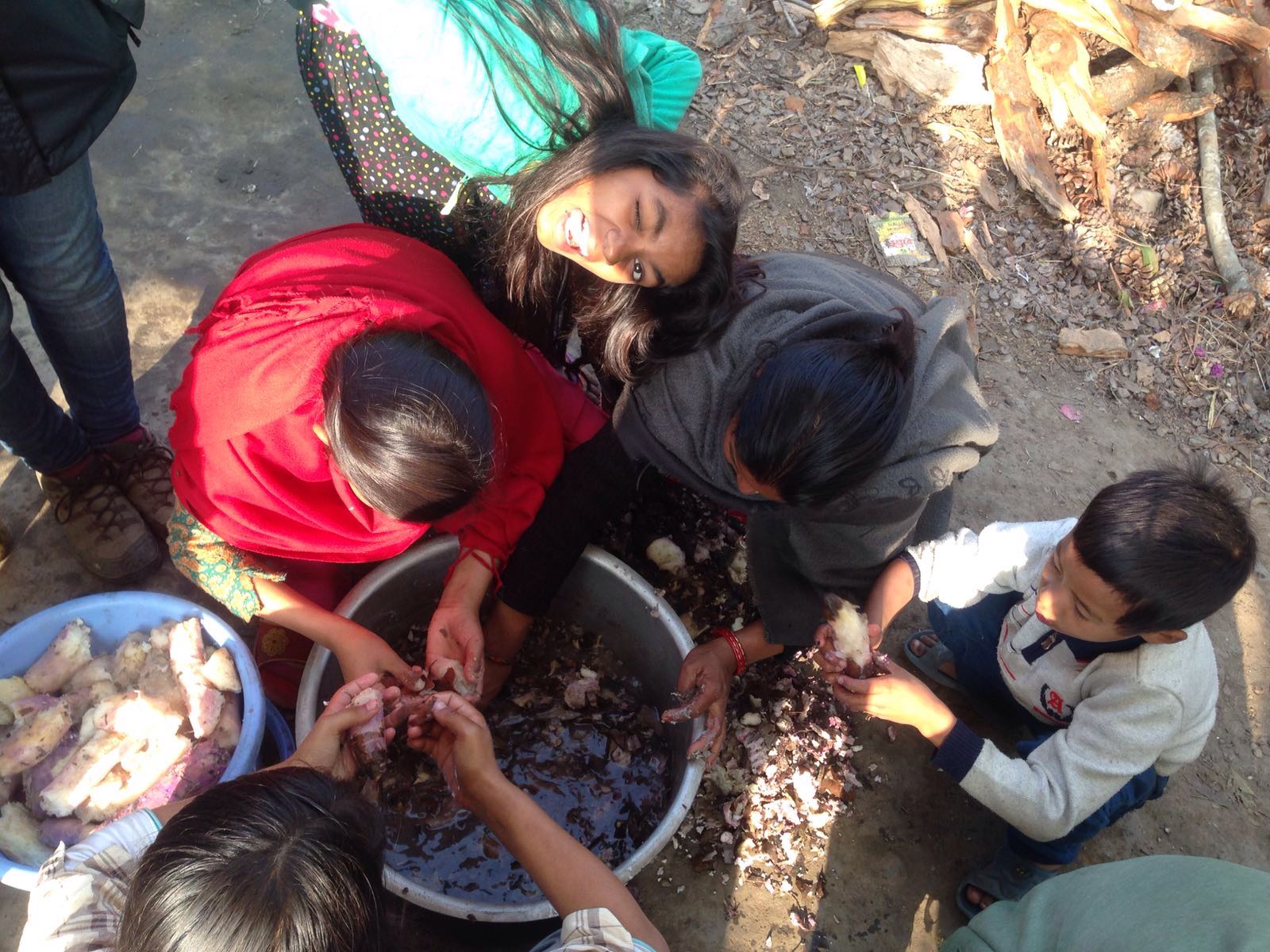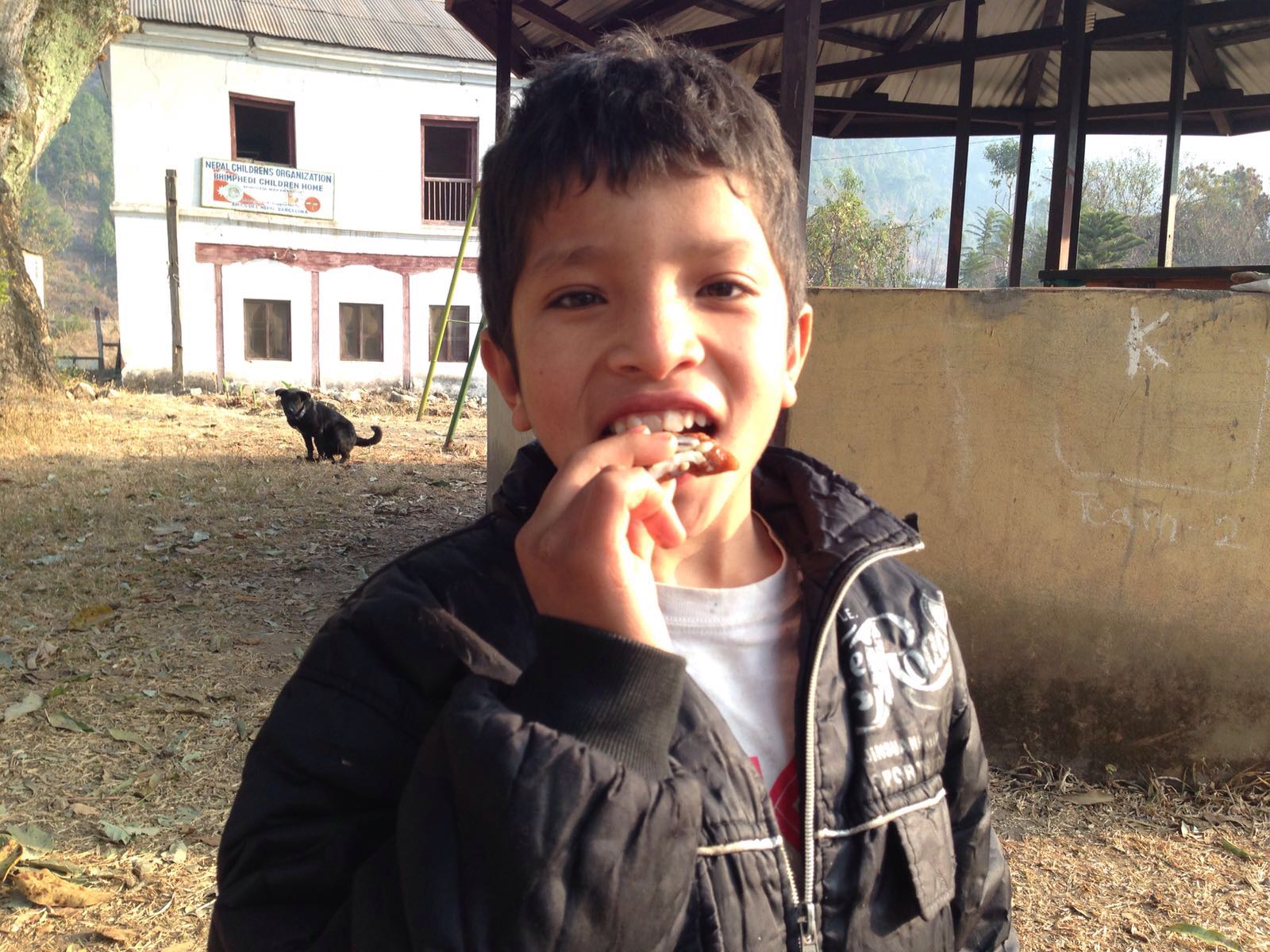Written by Marina Vinas, volunteer of Children’s Home
The Dashain is the Nepal’s national holiday comparable to Christmas. It is the main, longest and most auspicious festival in the Bikram Sambat, the annual calendar celebrated by all Nepalese people. During these days, everyone goes to the family house (parent’s home) and spend these days together making offerings and various rituals to worship goddess Durga in all its manifestations. Balmandir family could not be less and we also celebrated the Dashain.
A few days ago Maya Didi began to prepare the needed things for the tika day. Eleven days later, when we reached to the Children’s Home in the morning and opened the door, kids shouted: “they’re here, they’re here!”. They were anxiously waiting for us to start the festival, all dressing the new clothes (new pants or shoes) they had got a couple of days earlier. Maya opened the door of the “storeroom” where she had left a leave plate with seeds. A floral scent from the germinated sprouts came into our noses. In the TV room all was ready: a tray with rice mixed with flowers, a vase of flowers, a tray full of things for the tika (rice, colour powders and yogurt) and the germinated grass. According to tradition, elders put this tika on the forehead of younger relatives to bless them with abundance in the upcoming years and give them the “Dakshin” – a small amount of money . So Didi Maya began: first she took the flowers and, as if she was baptizing, she sprinkled some water over their heads. Then she threw some rice with flowers and put them the tika on the forehead, between the eyes (where the third eye is) and gave to each of them a hand of germinated grass wrapped with money. She did this with each child, from the younger to the older. And the big surprise was that she also put the tika to us! Then it was the Krishna’s turn (center director) and Ram (the cook). And finally, the Belly Didi’s turn. After that, we asked if we also could put the tika so Joana and I could also blessing with our best wishes to each of them.
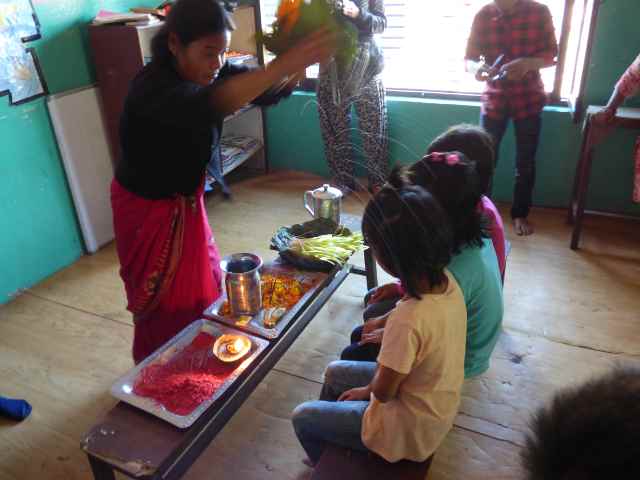

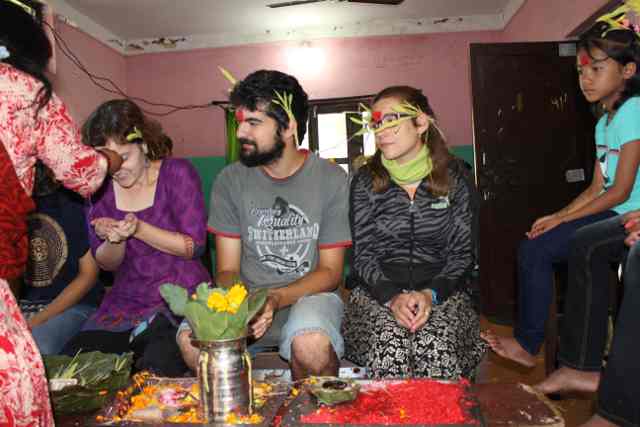
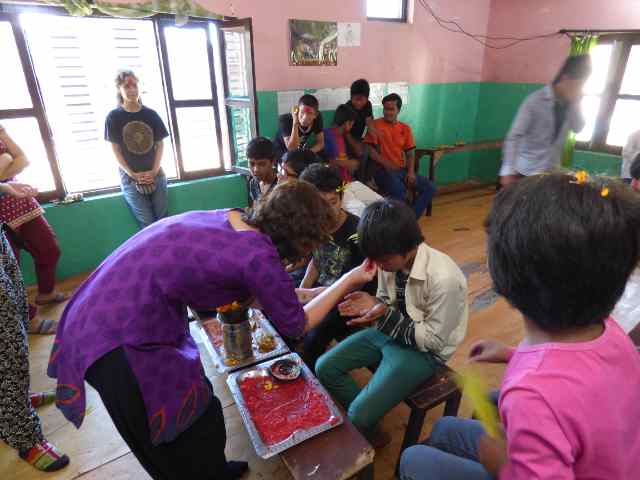
During these holidays they also make other rituals such as animal sacrifice. Normally we eat “masu” (meat) only on Saturday night, which is the holiday of each week in Nepal. But during the days of Dashain “masu” is very much present in every meal. A chicken one day, buffalo another day. And the surprise was yesterday morning when Krishna came with Basu who made the sacrifice of one of our goats. I was lucky that when I discovered the reason he had come for, the goat had already been sacrificed. Joana and I went to the place they were doing the ritual and Basu, helped by Ram and under the eyes of the Balmandir kids, began to peel the goat, clean, smear it with an orange paste (which as explained to me is to preserve and flavor) and make different cuts. After removing the different organs, the kids helped clean them. That day the members of the Nepal Children’s Organization came to Balmandir to put the tika and all together we tasted the goat meat.


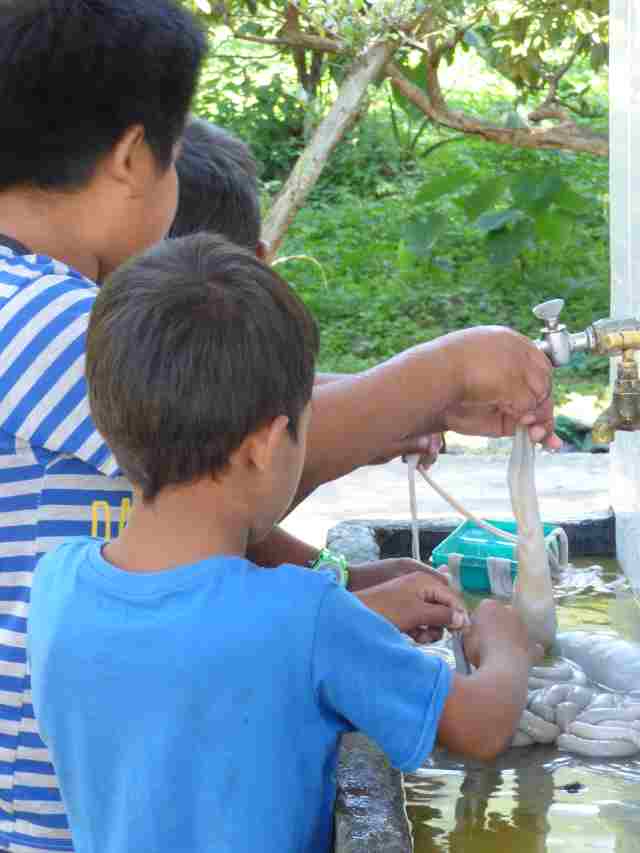
Still I have to tell you about another tradition. These days all children make kites and make them fly high, very high. Almost as high as the mountains that surround us. They have not explained the meaning, but perhaps these kites are done to make fly our best wishes to all.
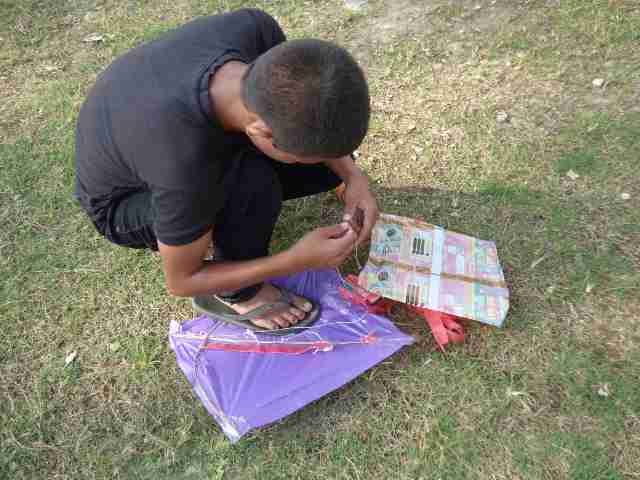
Happy Dashain !!
